Jitter decomposition method and measurement instrument
Nitsch , et al. December 22, 2
U.S. patent number 10,873,517 [Application Number 16/750,972] was granted by the patent office on 2020-12-22 for jitter decomposition method and measurement instrument. This patent grant is currently assigned to Rohde & Schwarz GmbH & Co. KG. The grantee listed for this patent is Rohde & Schwarz GmbH & Co. KG. Invention is credited to Adrian Ispas, Bernhard Nitsch.
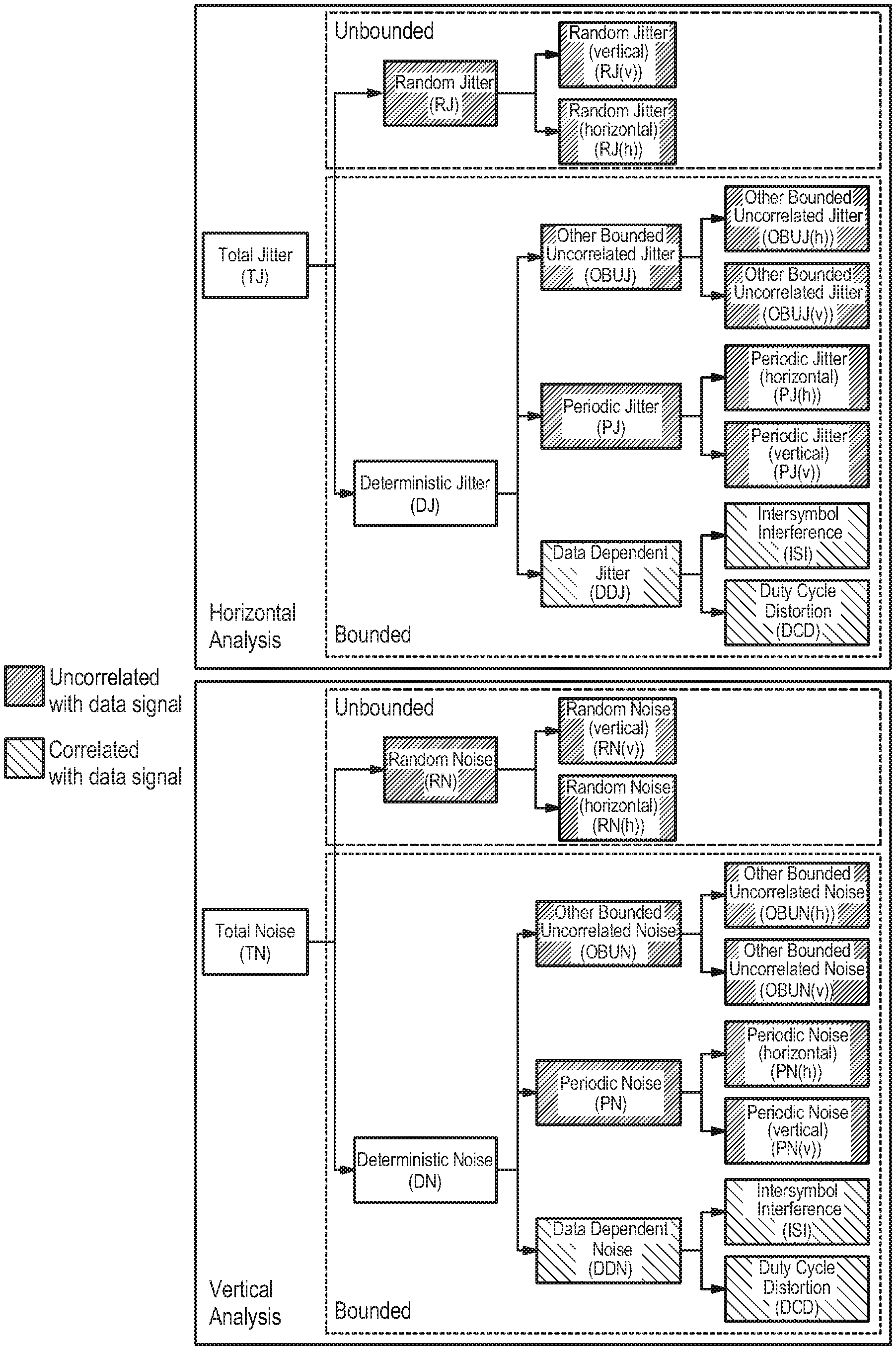
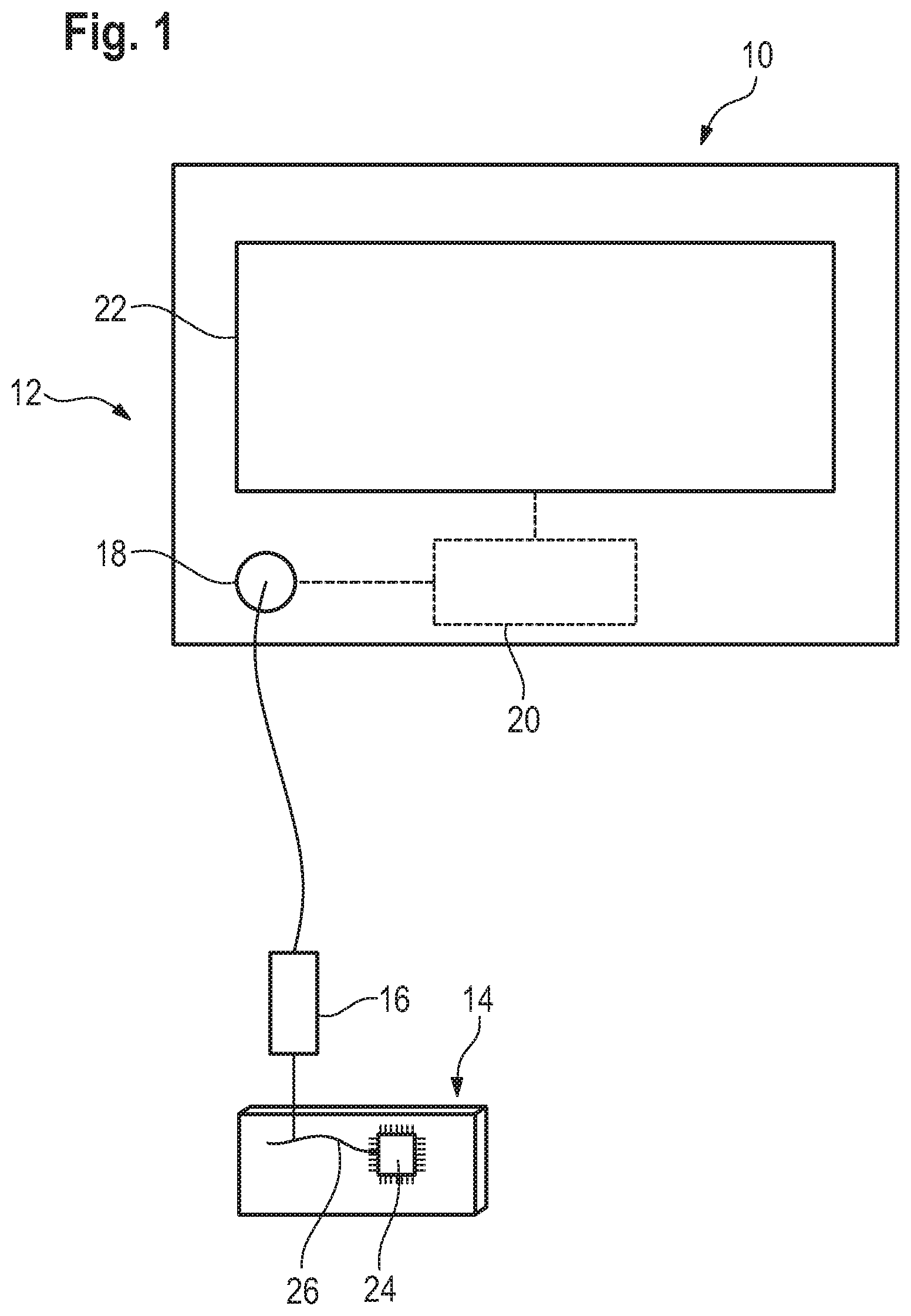
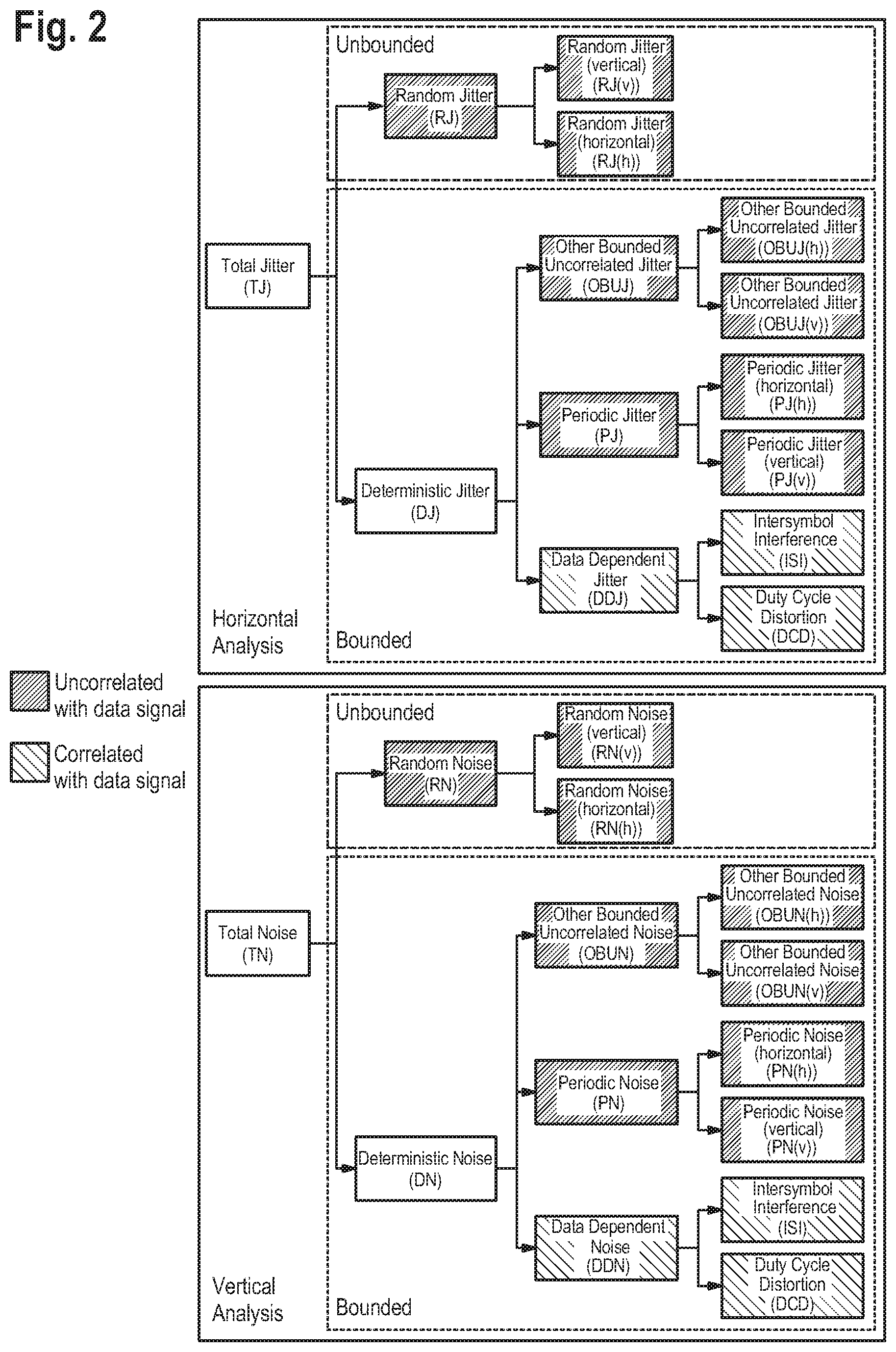

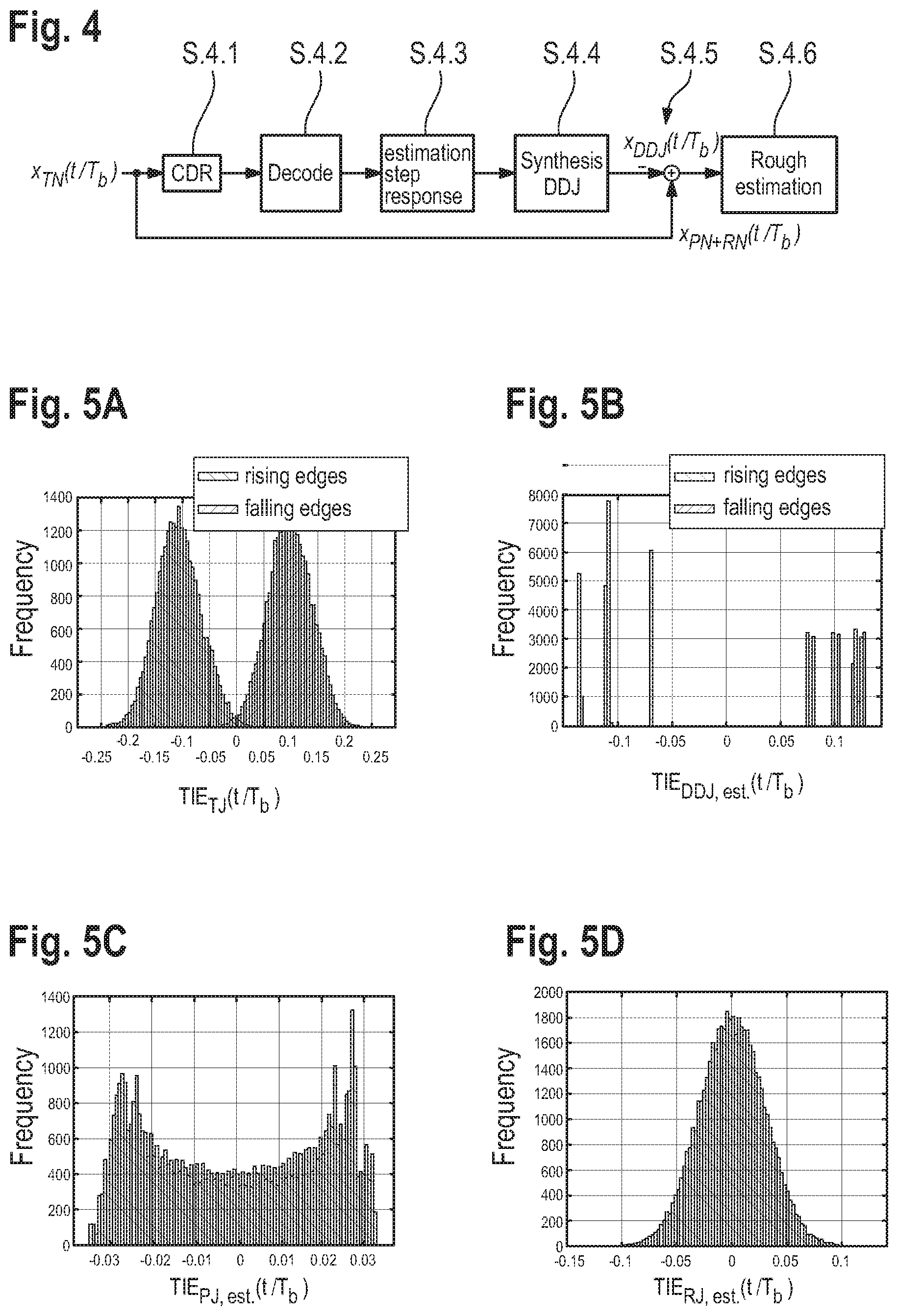
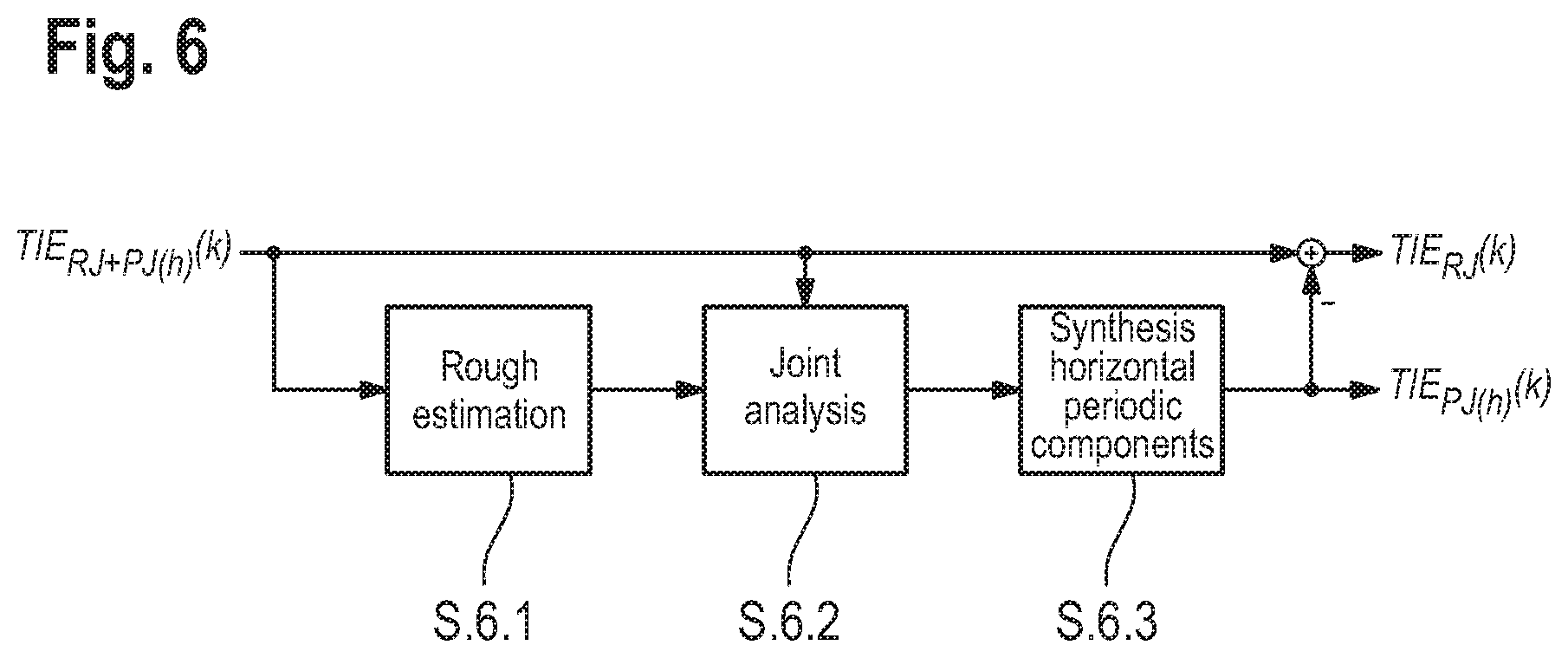
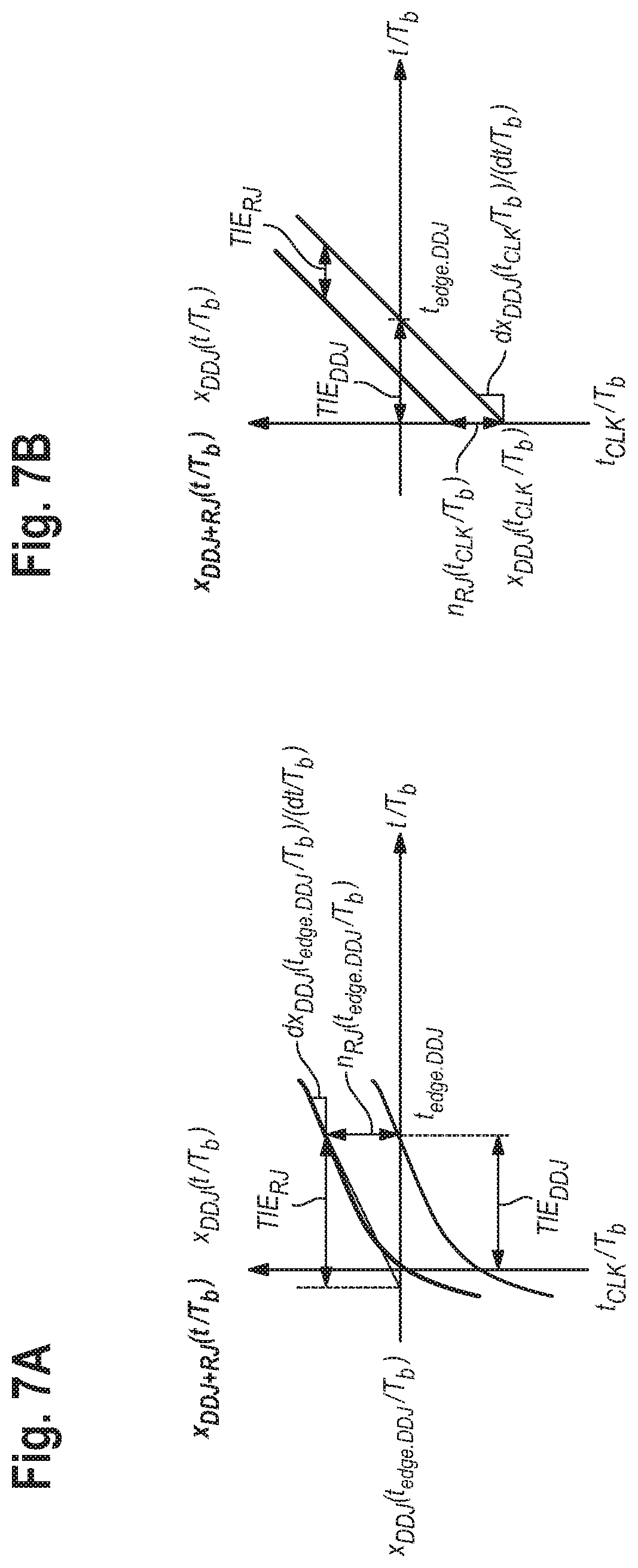
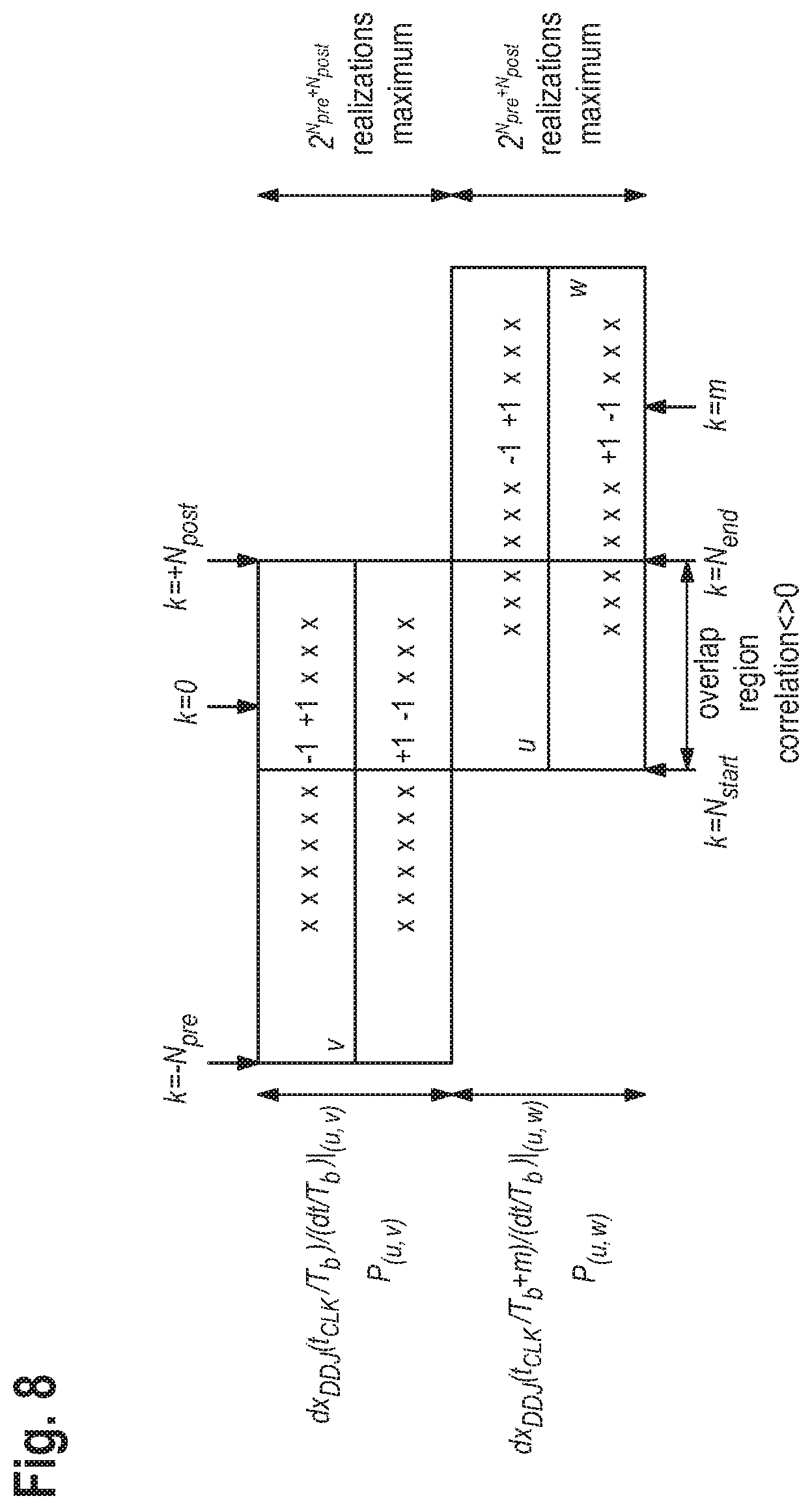
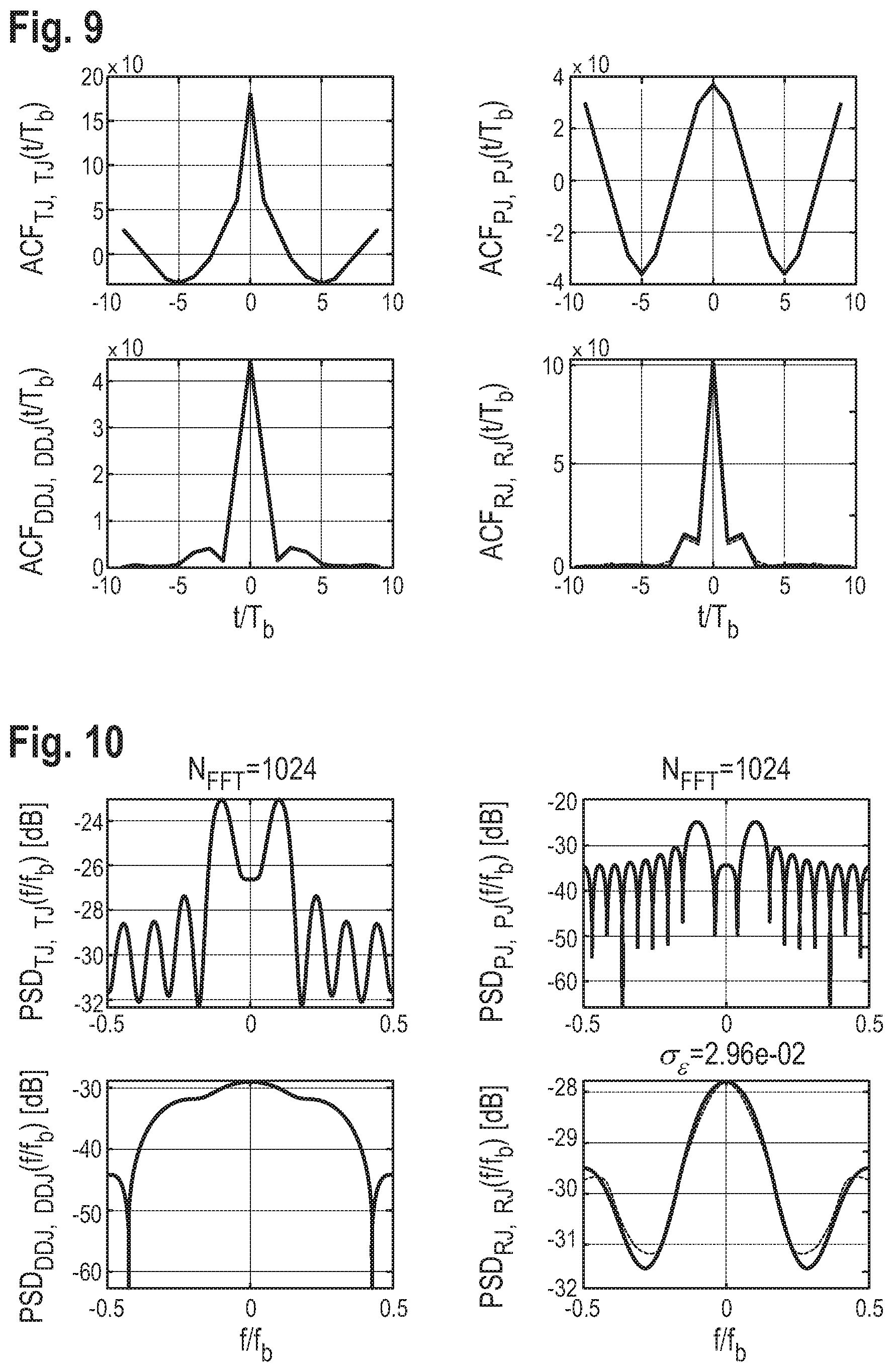
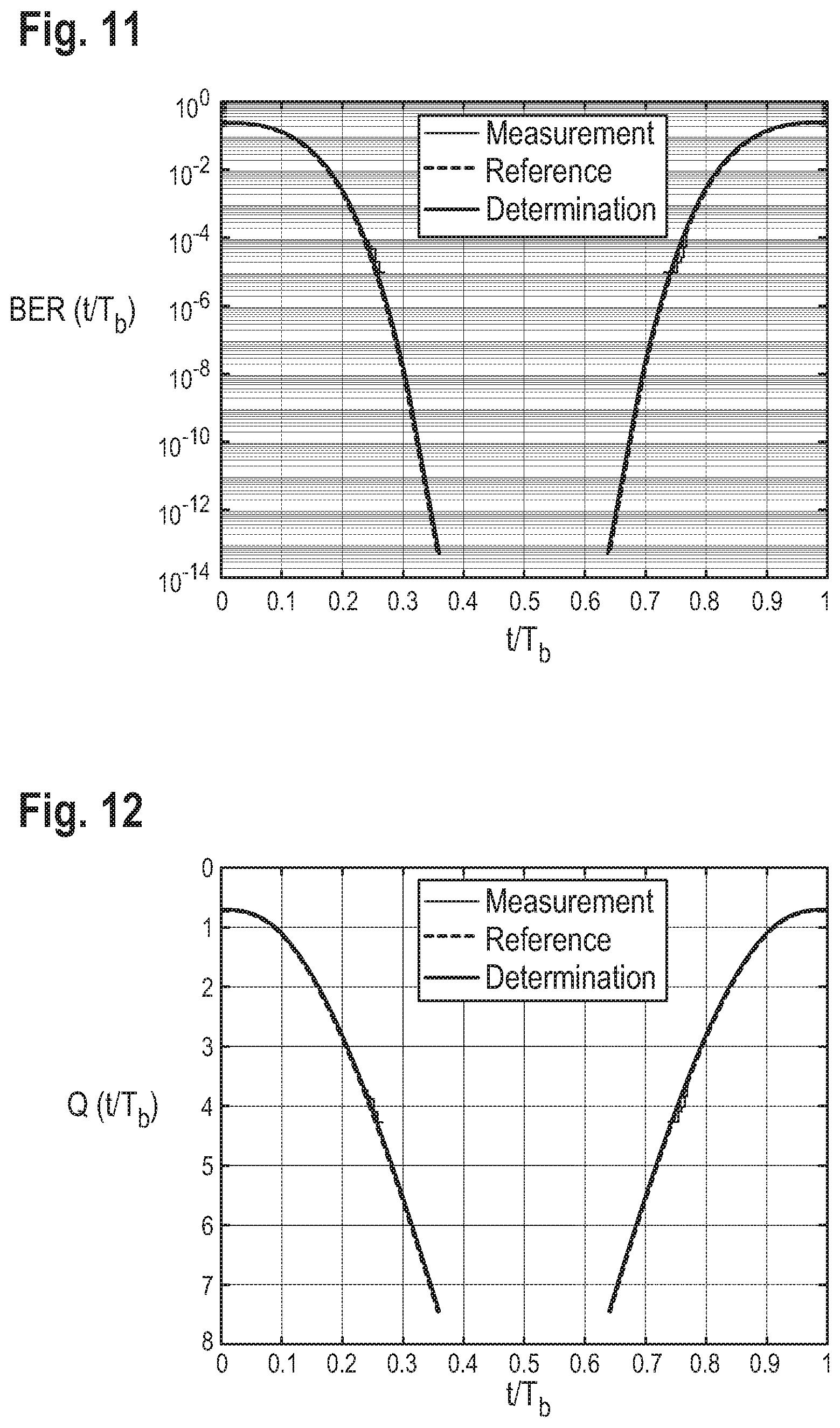
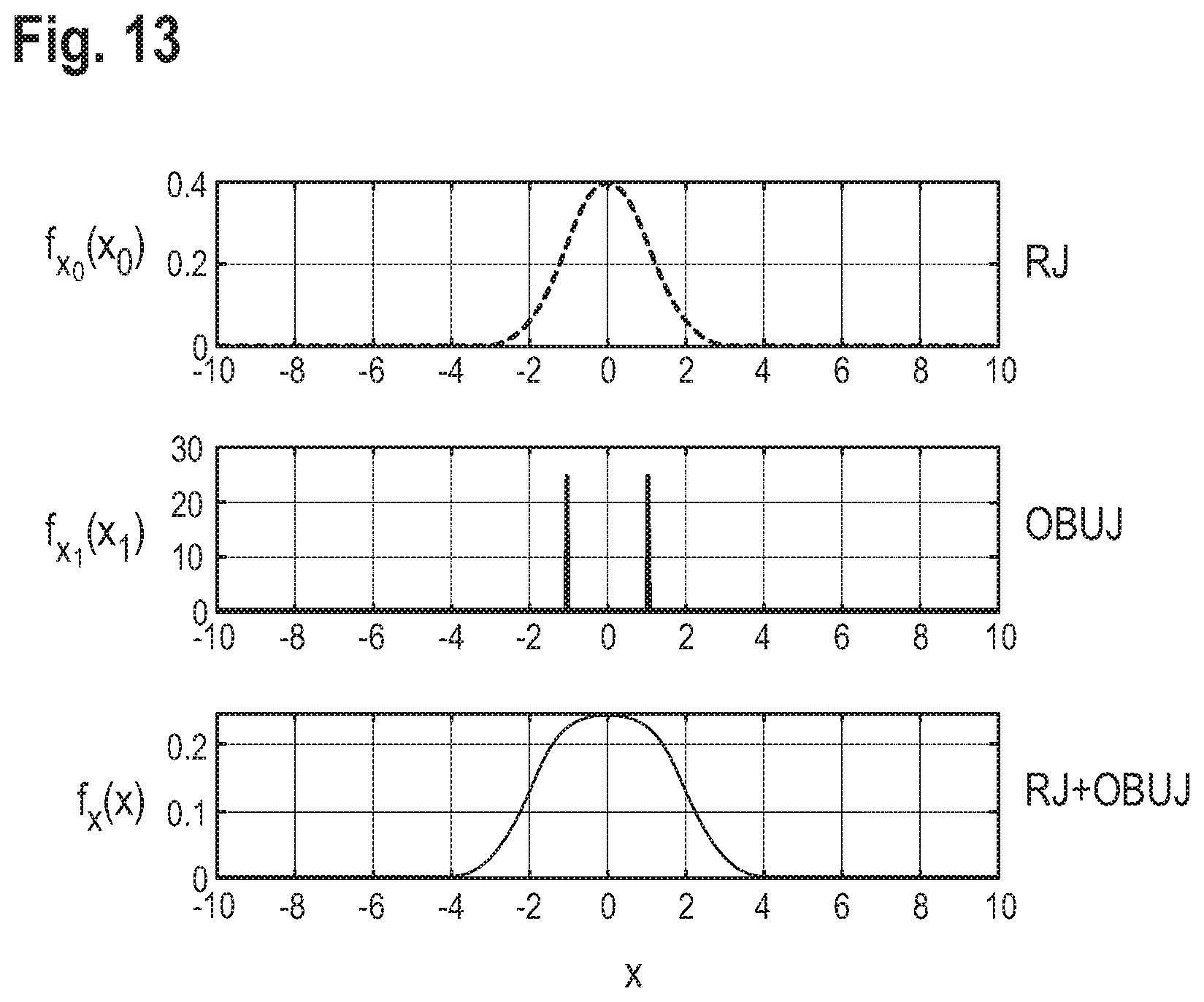
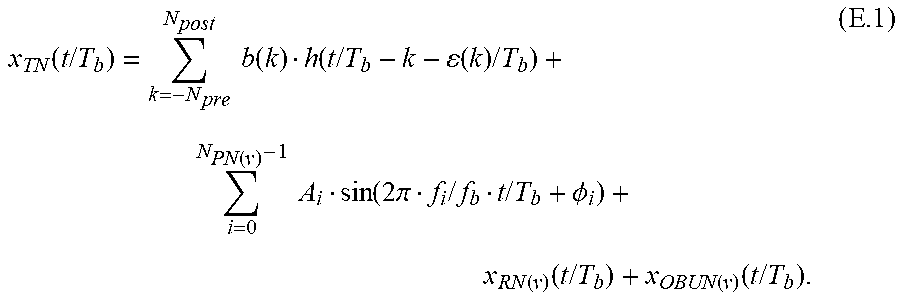
View All Diagrams
| United States Patent | 10,873,517 |
| Nitsch , et al. | December 22, 2020 |
Jitter decomposition method and measurement instrument
Abstract
A jitter decomposition method for decomposing several jitter and noise components contained in an input signal, wherein the input signal is generated by a signal source, is disclosed. The jitter decomposition method comprises: receiving the input signal; at least one of determining and receiving a reconstructed data dependent jitter signal; at least one of determining and receiving an impulse response, the impulse response being associated with at least the signal source; and determining at least a first statistical parameter being associated with a first jitter component or a first noise component in the input signal and a second statistical parameter being associated with a second jitter component or a second noise component in the input signal, the second jitter component or the second noise component being different from the first jitter component or the first noise component, respectively. The first statistical parameter and the second statistical parameter are determined by applying a statistical method at two different times, wherein the first statistical parameter and the second statistical parameter are each determined based on at least one of the reconstructed data dependent jitter signal and the impulse response. Moreover, a measurement instrument is disclosed.
| Inventors: | Nitsch; Bernhard (Munich, DE), Ispas; Adrian (Munich, DE) | ||||||||||
|---|---|---|---|---|---|---|---|---|---|---|---|
| Applicant: |
|
||||||||||
| Assignee: | Rohde & Schwarz GmbH & Co.
KG (Munich, DE) |
||||||||||
| Family ID: | 1000005258880 | ||||||||||
| Appl. No.: | 16/750,972 | ||||||||||
| Filed: | January 23, 2020 |
Prior Publication Data
| Document Identifier | Publication Date | |
|---|---|---|
| US 20200236020 A1 | Jul 23, 2020 | |
Related U.S. Patent Documents
| Application Number | Filing Date | Patent Number | Issue Date | ||
|---|---|---|---|---|---|
| 62799478 | Jan 31, 2019 | ||||
| 62795931 | Jan 23, 2019 | ||||
| Current U.S. Class: | 1/1 |
| Current CPC Class: | H04L 43/087 (20130101); H04L 1/203 (20130101); H04L 1/205 (20130101); H04L 43/045 (20130101); H04B 10/116 (20130101) |
| Current International Class: | H04B 10/116 (20130101); H04L 12/26 (20060101); H04L 1/20 (20060101) |
| Field of Search: | ;375/226 ;324/615,613 |
References Cited [Referenced By]
U.S. Patent Documents
| 7808252 | October 2010 | Sawara |
| 8006141 | August 2011 | Stephens |
| 2005/0267696 | December 2005 | Yamaguchi |
| 2010/0231233 | September 2010 | Dasnurkar |
| 2019/0064223 | February 2019 | Kincaid |
| 2985617 | Nov 2017 | EP | |||
Attorney, Agent or Firm: Christensen O'Connor Johnson Kindness PLLC
Parent Case Text
CROSS-REFERENCES TO RELATED APPLICATIONS
This application claims the benefit of U.S. Provisional Application No. 62/795,931, filed Jan. 23, 2019, and U.S. Provisional Application No. 62/799,478, filed Jan. 31, 2019, the disclosures of which are incorporated herein in their entirety.
Claims
The embodiments of the invention in which an exclusive property or privilege is claimed are defined as follows:
1. A jitter decomposition method for decomposing several jitter and noise components contained in an input signal, wherein the input signal is generated by a signal source, comprising: receiving said input signal; at least one of determining and receiving a reconstructed data dependent jitter signal; at least one of determining and receiving an impulse response, the impulse response being associated with at least said signal source; and determining at least a first statistical parameter being associated with a first jitter component or a first noise component in said input signal and a second statistical parameter being associated with a second jitter component or a second noise component in said input signal, the second jitter component or the second noise component being different from the first jitter component or the first noise component, respectively, wherein the first statistical parameter and the second statistical parameter are determined by applying a statistical method at least at two different times, and wherein the first statistical parameter and the second statistical parameter are each determined based on at least one of the reconstructed data dependent jitter signal and the impulse response.
2. The jitter decomposition method of claim 1, wherein the first statistical parameter is associated with a vertical jitter component and the second statistical parameter is associated with a horizontal jitter component, wherein the vertical jitter component is caused by an amplitude perturbation, and wherein the horizontal jitter component is caused by a temporal perturbation.
3. The jitter decomposition method of claim 1, wherein the first statistical parameter is associated with a noise component and the second statistical parameter is associated with a jitter component.
4. The jitter decomposition method of claim 1, wherein at least one jitter component in said input signal is neglected or set to zero, or wherein at least one noise component in said input signal is neglected or set to zero.
5. The jitter decomposition method of claim 1, wherein a vertical periodic noise signal in said input signal is neglected.
6. The jitter decomposition method of claim 1, wherein the first statistical parameter and the second statistical parameter comprise a statistical moment of second order or higher.
7. The jitter decomposition method of claim 1, wherein said input signal is decoded, thereby generating a decoded input signal.
8. The jitter decomposition method of claim 1, wherein the second statistical parameter is determined based on at least the first statistical parameter.
9. The jitter decomposition method of claim 1, wherein a third statistical parameter associated with a third jitter component or a third noise component in said input signal is determined, the third jitter component or the third noise component being different from the first jitter component or the first noise component as well as the second jitter component or the second noise component.
10. The jitter decomposition method of claim 1, wherein a reconstructed vertical periodic noise signal is at least one of determined and received, wherein the vertical periodic noise signal is associated with periodic noise that is caused by an amplitude perturbation.
11. The jitter decomposition method of claim 1, wherein a horizontal periodic jitter signal is determined based on at least one of the input signal, the reconstructed data dependent jitter signal and a reconstructed vertical periodic noise signal, wherein the horizontal periodic jitter signal is associated with periodic jitter that is caused by a temporal perturbation.
12. The jitter decomposition method of claim 1, wherein a random perturbation signal is determined based on at least one of the input signal, the reconstructed data dependent jitter signal, a reconstructed vertical periodic noise signal and a determined horizontal periodic jitter signal.
13. The jitter decomposition method of claim 12, wherein the second statistical parameter corresponds to a statistical parameter assigned to at least one of the horizontal random jitter and the vertical random jitter, wherein the second statistical parameter is determined based on the random perturbation signal, wherein the statistical parameter assigned to the horizontal random jitter is associated with random jitter that is caused by a temporal perturbation, and wherein the statistical parameter assigned to the vertical random jitter is associated with random jitter that is caused by an amplitude perturbation.
14. The jitter decomposition method of claim 12, wherein the first statistical parameter corresponds to a statistical parameter assigned to the vertical random noise, wherein the first statistical parameter is determined based on the random perturbation signal, the first statistical parameter being associated with a vertical random noise component of said input signal, wherein the vertical periodic noise component is associated with periodic noise that is caused by a temporal perturbation.
15. The jitter decomposition method of claim 14, wherein the second statistical parameter corresponds to a statistical parameter assigned to at least one of the horizontal random jitter and the vertical random jitter, wherein the second statistical parameter is determined based on at least one of the random perturbation signal and the determined first statistical parameter, wherein the statistical parameter assigned to the horizontal random jitter is associated with random jitter that is caused by a temporal perturbation, and wherein the statistical parameter assigned to the vertical random jitter is associated with random jitter that is caused by an amplitude perturbation.
16. The jitter decomposition method of claim 11, wherein at least one of a time variant equalizer filter and a time invariant equalizer filter is applied in order to determine said horizontal periodic jitter signal.
17. The jitter decomposition method of claim 11, wherein horizontal periodic jitter signal parameters are determined in order to determine said horizontal periodic jitter signal, the horizontal periodic jitter signal parameters being associated with periodic functions.
18. The jitter decomposition method of claim 17, wherein the horizontal periodic jitter signal parameters are determined jointly.
19. The jitter decomposition method of claim 17, wherein the horizontal periodic jitter signal parameters are determined by at least one of minimizing and maximizing a cost functional.
20. The jitter decomposition method of claim 10, wherein the reconstructed data dependent jitter signal, the reconstructed vertical periodic noise signal and the determined horizontal periodic jitter signal are subtracted from the input signal in order to determine a random perturbation signal.
21. The jitter decomposition method of claim 20, wherein a statistical analysis of the random perturbation signal is performed in order to determine at least one of the first statistical parameter and the second statistical parameter.
22. The jitter decomposition method of claim 20, wherein an expected value of the random perturbation signal squared is determined in order to determine at least one of the first statistical parameter and the second statistical parameter.
23. The jitter decomposition method of claim 1, wherein said input signal is PAM-n coded, wherein n is an integer bigger than 1.
24. A measurement instrument, comprising: at least one input channel; and an analysis circuit being connected to the at least one input channel, wherein the measurement instrument being configured to receive an input signal via said input channel and to forward the input signal to the analysis circuit, the analysis circuit being configured to at least one of determine and receive a reconstructed data dependent jitter signal; the analysis circuit being configured to at least one of determine and receive an impulse response, the impulse response being associated with at least said signal source; and the analysis circuit being configured to determine at least a first statistical parameter being associated with a first jitter component or a first noise component in said input signal and a second statistical parameter being associated with a second jitter component or a second noise component in said input signal, wherein the first statistical parameter and the second statistical parameter are determined by applying a statistical method at two different times, and wherein the first statistical parameter and the second statistical parameter are each determined based on at least one of the reconstructed data dependent jitter signal and the impulse response.
25. The measurement instrument of claim 24, wherein the first statistical parameter is associated with a vertical jitter component and the second statistical parameter is associated with a horizontal jitter component, wherein the vertical jitter component is caused by an amplitude perturbation, and wherein the horizontal jitter component is caused by a temporal perturbation.
26. The measurement instrument of claim 24, wherein the first statistical parameter is associated with a noise component and the second statistical parameter is associated with a jitter component.
27. The measurement instrument of claim 24, wherein the analysis circuit is configured to neglect or set to zero at least one of a jitter component in said input signal, noise component in said input signal and a vertical periodic noise signal in said input signal.
28. The measurement instrument of claim 24, wherein the first statistical parameter and the second statistical parameter comprise a statistical moment of second order or higher.
29. The measurement instrument of claim 24, wherein the analysis circuit is configured to decode said input signal, thereby generating a decoded input signal.
Description
FIELD OF THE DISCLOSURE
Embodiments of the present disclosure generally relate to a jitter decomposition method for decomposing several jitter and noise components contained in an input signal. Further, embodiments of the present disclosure generally relate to a measurement instrument.
BACKGROUND
For jitter analysis, the components of jitter such as Data Dependent Jitter (DDJ), Periodic Jitter (PJ), Other Bounded Uncorrelated Jitter (OBUJ) and Random Jitter (RJ) must be separated and the bit error rate (BER) must be calculated.
So far, techniques are known that exclusively relate on determining the Time Interval Error (TIE) of the Total Jitter (TJ). In fact, the causes of the different jitter types lead to a distortion of the received signal and they, therefore, have an influence on the TIE via the received signal. Accordingly, the respective components of jitter are calculated once the Time Interval Error (TIE) of the Total Jitter (TJ) is determined.
However, it turned out that the measurement time is long if a high accuracy is to be achieved. Put another way, the signal length of the signal to be analyzed is long resulting in a long measuring duration if high precision is aimed for.
Moreover, the respective components of jitter are obtained by averaging operations. For instance, the Data Dependent Jitter (DDJ) is estimated by averaging the Time Interval Error (TIE) of the Total Jitter (TJ), namely a DDJ eye diagram or the DDJ worst case eye diagram. Certain components of jitter cannot be determined in a reliable manner.
Further, there is a cross talk between jitter and noise, as amplitude perturbations may also cause jitter and temporal perturbations may also cause noise. For an optimal accuracy, it is important to also analyze this cross talk between jitter and noise.
Accordingly, there is a need for a fast and reliable possibility to decompose several jitter and noise components of an input signal.
SUMMARY
Embodiments of the present disclosure provide a jitter decomposition method for decomposing several jitter and noise components contained in an input signal, wherein the input signal is generated by a signal source. In an embodiment, the method comprises the following steps:
receiving the input signal;
at least one of determining and receiving a reconstructed data dependent jitter signal;
at least one of determining and receiving an impulse response, the impulse response being associated with at least the signal source; and
determining at least a first statistical parameter being associated with a first jitter component or a first noise component in the input signal and a second statistical parameter being associated with a second jitter component or a second noise component in the input signal, the second jitter component or the second noise component being different from the first jitter component or the first noise component, respectively,
wherein the first statistical parameter and the second statistical parameter are determined by applying a statistical method at least at two different times, and wherein the first statistical parameter and the second statistical parameter are each determined based on at least one of the reconstructed data dependent jitter signal and the impulse response.
Thus, the jitter decomposition method according to the present disclosure provides a possibility to jointly analyze two different jitter components, two different noise components and/or a jitter component and a noise component. Thus, crosstalk between the individual jitter components and/or noise components can be analyzed and the individual components can be determined more accurately.
The method according to the disclosure is based on the rationale to apply the statistical method at least at two different times. This way, a system of equations with at least two equations for the first statistical parameter and the second statistical parameter is obtained. By solving this system of equations, the first statistical parameter and the second statistical parameter can be determined.
The statistical method may be applied at more than two different times. This way, an overdetermined system of equations is obtained, The first and the second statistical parameter may then be determined as the solutions of the system of equations giving the minimum overall error, for example by applying a least mean squares approach.
As already explained above, there may be cross-talk between the perturbations in time, i.e. the jitter, and the perturbations in amplitude, i.e. the noise. Put another way, jitter may be caused by "horizontal" temporal perturbations, which will be denoted by "(h)" in the following, and/or by "vertical" amplitude perturbations, which will be denoted by a "(v)" in the following.
Likewise, noise may be caused by "horizontal" temporal perturbations, which will be denoted by "(h)" in the following, and/or by "vertical" amplitude perturbations, which will be denoted by a "(v)" in the following.
In detail, the terminology used above and below is the following:
Horizontal periodic jitter PJ(h) is periodic jitter that is caused by a temporal perturbation.
Vertical periodic jitter PJ(v) is periodic jitter that is caused by an amplitude perturbation.
Horizontal other bounded uncorrelated jitter OBUJ(h) is other bounded uncorrelated jitter that is caused by a temporal perturbation.
Vertical other bounded uncorrelated jitter OBUJ(v) is other bounded uncorrelated jitter that is caused by an amplitude perturbation.
Horizontal random jitter RJ(h) is random jitter that is caused by a temporal perturbation.
Vertical random jitter RJ(v) is random jitter that is caused by an amplitude perturbation.
The definitions for noise are analogous to those for jitter:
Horizontal periodic noise PN(h) is periodic noise that is caused by a temporal perturbation.
Vertical periodic noise PN(v) is periodic noise that is caused by an amplitude perturbation.
Horizontal other bounded uncorrelated noise OBUN(h) is other bounded uncorrelated noise that is caused by a temporal perturbation.
Vertical other bounded uncorrelated noise OBUN(v) is other bounded uncorrelated noise that is caused by an amplitude perturbation.
Horizontal random noise RN(h) is random noise that is caused by a temporal perturbation.
Vertical random noise RN(v) is random noise that is caused by an amplitude perturbation.
The vertical random noise and the horizontal random noise components are statistically independent from one another. Likewise, the horizontal random jitter and the vertical random jitter components are statistically independent from one another. Moreover, all of these components are normal-distributed and have an expected value of zero. Thus, a respective variance of the components is the only quantity needed to describe the distributions of the horizontal random jitter, the vertical random jitter, the horizontal random noise and the vertical random noise, respectively.
Accordingly, the first statistical parameter and/or the second statistical parameter may be a variance of the respective jitter or noise component.
According to one aspect of the present disclosure, the first statistical parameter is associated with a vertical jitter component and the second statistical parameter is associated with a horizontal jitter component, wherein the vertical jitter component is caused by an amplitude perturbation, and wherein the horizontal jitter component is caused by a temporal perturbation. Thus, the vertical jitter and the horizontal jitter can be analyzed at the same time as the first statistical parameter and the second statistical parameter are determined simultaneously by applying the statistical method at least at two different times.
According to a further aspect of the present disclosure, the first statistical parameter is associated with a noise component and the second statistical parameter is associated with a jitter component. Thus, the noise component and the jitter component are analyzed jointly as the first statistical parameter and the second statistical parameter are determined simultaneously by applying the statistical method at least at two different times. Accordingly, a joint jitter and noise analysis method is provided by the jitter decomposition method according to the disclosure.
In other words, the method according to the disclosure provides a possibility to decompose the several jitter and noise components, in particular at least the vertical random noise, the horizontal random noise, the vertical random jitter and/or the horizontal random jitter, and to analyze them and their individual contributions e.g. to the time interval error.
In one embodiment of the present disclosure, at least one jitter component in the input signal is neglected or set to zero, or at least one noise component is neglected or set to zero. As the at least one jitter component or the at least one noise component in the input signal is set to zero and/or neglected, the computational cost of the jitter decomposition method is reduced and/or the method may be performed with less computational time.
In another embodiment of the present disclosure, a vertical periodic noise signal in the input signal is neglected. As the vertical periodic noise in the input signal is neglected, the computational cost of the jitter decomposition method is reduced and/or the method may be performed with less computational time.
According to a further aspect, the first statistical parameter and the second statistical parameter comprise a statistical moment of second order or higher. For example, the first statistical parameter and/or the second statistical parameter comprise a variance. As already explained above, the respective variance of the components is the only quantity needed to describe the distributions of the horizontal random jitter, the vertical random jitter, the horizontal random noise and the vertical random noise, respectively.
In another embodiment of the present disclosure, the input signal is decoded, thereby generating a decoded input signal. In other words, the input signal is divided into the individual symbol intervals and the values of the individual symbols ("bits") are determined. Accordingly, the steps of the jitter decomposition method outlined above may also be performed based on the decoded input signal instead of the input signal.
The step of decoding the input signal may be skipped if the input signal comprises an already known bit sequence. For example, the input signal may be a standardized signal such as a test signal that is determined by a communication protocol. In this case, the input signal does not need to be decoded, as the bit sequence contained in the input signal is already known.
According to a further embodiment of the present disclosure, the second statistical parameter is determined based on at least the first statistical parameter. Accordingly, the first statistical parameter may be determined by applying the statistical method at first, and the second statistical parameter may afterwards be determined based on the already determined first statistical parameter.
According to another aspect of the present disclosure, a third statistical parameter associated with a third jitter component or a third noise component in the input signal is determined, the third jitter component or the third noise component being different from the first jitter component or the first noise component as well as the second jitter component or the second noise component. Thus, the jitter decomposition method according to the present disclosure provides a possibility to jointly analyze three different jitter components, three different noise components, two jitter components and a noise component and/or one jitter component and three noise components. As explained above, crosstalk between the individual jitter components and/or the noise components can be analyzed and the individual components can be determined more accurately.
A reconstructed vertical periodic noise signal is at least one of determined and received, wherein the vertical periodic noise signal is associated with periodic noise that is caused by an amplitude perturbation. The first statistical parameter and/or the second statistical parameter may be determined at least partially based on the reconstructed vertical periodic noise signal.
According to one aspect of the present disclosure, a horizontal periodic jitter signal is determined based on at least one of the input signal, the reconstructed data dependent jitter signal and a reconstructed vertical periodic noise signal, wherein the horizontal periodic jitter signal is associated with periodic jitter that is caused by a temporal perturbation. The first statistical parameter and/or the second statistical parameter may be determined at least partially based on the determined horizontal periodic jitter signal.
In another embodiment of the present disclosure, a random perturbation signal is determined based on at least one of the input signal, the reconstructed data dependent jitter signal, a reconstructed vertical periodic noise signal and a determined horizontal periodic jitter signal. The first statistical parameter and/or the second statistical parameter may be determined at least partially based on the random perturbation signal.
The second statistical parameter may correspond to a statistical parameter assigned to at least one of the horizontal random jitter and the vertical random jitter, wherein the second statistical parameter is determined based on the random perturbation signal, wherein the statistical parameter assigned to the horizontal random jitter is associated with random jitter that is caused by a temporal perturbation, and wherein the statistical parameter assigned to the vertical random jitter is associated with random jitter that is caused by an amplitude perturbation.
The first statistical parameter may correspond to a statistical parameter assigned to the vertical random noise, wherein the first statistical parameter is determined based on the random perturbation signal, the first statistical parameter being associated with a vertical random noise component of the input signal, wherein the vertical periodic noise component is associated with periodic noise that is caused by a temporal perturbation.
According to a further aspect of the present disclosure, the second statistical parameter corresponds to a statistical parameter assigned to at least one of the horizontal random jitter and the vertical random jitter, wherein the second statistical parameter is determined based on at least one of the random perturbation signal and the determined first statistical parameter, wherein the statistical parameter assigned to the horizontal random jitter is associated with random jitter that is caused by a temporal perturbation, and wherein the statistical parameter assigned to the vertical random jitter is associated with random jitter that is caused by an amplitude perturbation.
According to an embodiment of the disclosure, at least one of a time variant equalizer filter and a time invariant equalizer filter is applied in order to determine the horizontal periodic jitter signal. The horizontal periodic jitter component is distorted by a bit sequence contained in the input signal, which distortion is removed by the time variant equalizer filter and/or the time invariant equalizer filter. In some embodiments, the time variant equalizer filter is used when the input signal comprises duty cycle distortion and/or a duty cycle distortion comprised in the input signal is not negligible compared to the horizontal periodic jitter. Accordingly, the time invariant equalizer filter may be used when the input signal is free of duty cycle distortion and/or a duty cycle distortion comprised in the input signal is negligible compared to the horizontal periodic jitter.
According to an aspect of the disclosure, horizontal periodic jitter signal parameters are determined in order to determine the horizontal periodic jitter signal, the horizontal periodic jitter signal parameters being associated with periodic functions. The horizontal periodic jitter signal may be modelled as a sum over several sine-shaped functions, wherein the signal parameters associated with the periodic functions may be the respective amplitudes, frequencies and/or phases of the individual summands of the sum. In other words, the horizontal periodic jitter signal is modelled as a Fourier series, in particular as a finite Fourier series.
According to a further aspect, the horizontal periodic jitter signal parameters are determined jointly. In other words, the horizontal periodic jitter signal parameters are determined simultaneously instead of consecutively. In general, the accuracy of a joint determination of several parameters is better than the consecutive determination of these parameters. Thus, the accuracy of the determined horizontal periodic jitter signal parameters is enhanced by the joint determination.
The horizontal periodic jitter signal parameters may be determined by at least one of minimizing and maximizing a cost functional. In other words, the cost functional depends on the horizontal periodic jitter signal parameters, which are determined such that the cost functional becomes minimal or maximal, respectively. Whether the cost functional is minimized or maximized depends on the particular definition of the cost functional, as both cases can be converted into one another by a global multiplication of the cost functional with minus one. However, the cost functional may be defined such that the deconvolution is performed by minimizing the cost functional, which can be regarded as the intuitive definition of the cost functional.
According to another aspect of the present disclosure, the reconstructed data dependent jitter signal, the reconstructed vertical periodic noise signal and the determined horizontal periodic jitter signal are subtracted from the input signal in order to determine the random perturbation signal. Accordingly, the random perturbation signal is free of the above-mentioned components and thus approximately only contains horizontal random jitter and vertical random noise.
In another embodiment of the disclosure, a statistical analysis of the random perturbation signal is performed in order to determine at least one of the first statistical parameter and the second statistical parameter. As explained above, the random perturbation signal contains approximately only horizontal random jitter and vertical random noise, which both are normal-distributed quantities. Accordingly, a statistical analysis is suitable for the determination of the first statistical parameter and/or the second statistical parameter.
According to another aspect, an expected value of the random perturbation signal squared is determined in order to determine at least one of the first statistical parameter and the second statistical parameter. It turned out that the expected value squared is dependent on both the random jitter variance and the vertical random noise variance, in particular linearly dependent. Thus, also the vertical random noise variance may be determined from the determined expected value.
Moreover, the input signal may be PAM-n coded, wherein n is an integer bigger than 1. Accordingly, the method is not limited to binary signals (PAM-2 coded) since any kind of pulse-amplitude modulated signals may be processed.
Embodiments of the present disclosure further provide a jitter decomposition method for decomposing several jitter and noise components contained in an input signal, wherein the input signal is generated by a signal source. In an embodiment, the method comprises the following steps:
receiving the input signal;
decoding the input signal, thereby generating a decoded input signal;
at least one of determining and receiving a reconstructed data dependent jitter signal;
at least one of determining and receiving a reconstructed vertical periodic noise signal, wherein the vertical periodic noise signal is associated with periodic noise that is caused by an amplitude perturbation;
at least one of determining and receiving an impulse response, the impulse response being associated with at least the signal source;
determining a horizontal periodic jitter signal based on at least one of the input signal, the decoded input signal, the reconstructed data dependent jitter signal and the reconstructed vertical periodic noise signal, wherein the horizontal periodic jitter signal is associated with periodic jitter that is caused by a temporal perturbation;
determining a random perturbation signal based on at least one of the input signal, the decoded input signal, the reconstructed data dependent jitter signal, the reconstructed vertical periodic noise signal and the determined horizontal periodic jitter signal;
determining a vertical random noise variance based on the random perturbation signal, the random noise variance being associated with a vertical random noise component of the input signal, wherein the vertical periodic noise component is associated with periodic noise that is caused by a temporal perturbation; and determining at least one of a horizontal random jitter variance and a vertical random jitter variance based on at least one of the random perturbation signal and the determined vertical random noise variance, wherein the horizontal random jitter variance is associated with random jitter that is caused by a temporal perturbation, and wherein the vertical random jitter variance is associated with random jitter that is caused by an amplitude perturbation.
The explanations and advantages given above concerning the other embodiments of the jitter decomposition method also apply to this particular embodiment.
Embodiments of the present disclosure further provide a measurement instrument, comprising at least one input channel and an analysis circuit or module being connected to the at least one input channel. The measurement instrument is configured to receive an input signal via the input channel and to forward the input signal to the analysis module. The analysis module is configured to at least one of determine and receive a reconstructed data dependent jitter signal. The analysis module is configured to at least one of determine and receive an impulse response, the impulse response being associated with at least the signal source. The analysis module is configured to determine at least a first statistical parameter being associated with a first jitter component or a first noise component in the input signal and a second statistical parameter being associated with a second jitter component or a second noise component in the input signal. The first statistical parameter and the second statistical parameter are determined by applying a statistical method at two different times, wherein the first statistical parameter and the second statistical parameter are each determined based on at least one of the reconstructed data dependent jitter signal and the impulse response.
Thus, the measurement instrument according to the present disclosure provides a possibility to jointly analyze two different jitter components, two different noise components and/or a jitter component and a noise component. Thus, crosstalk between the individual jitter components and/or noise components can be analyzed by the measurement instrument and the individual components can be determined more accurately.
The measurement instrument according to the disclosure is based on the rationale to apply the statistical method at least at two different times. This way, a system of equations with at least two equations for the first statistical parameter and the second statistical parameter is obtained. By solving this system of equations, the first statistical parameter and the second statistical parameter can be determined.
The measurement instrument may be configured to apply the statistical method at more than two different times. This way, an overdetermined system of equations is obtained, The first and the second statistical parameter may then be determined as the solutions of the system of equations giving the minimum overall error, for example by applying a least mean squares approach.
In some embodiments, the measurement instrument is configured to perform at least one of the jitter decomposition methods described above, for example all of them.
According to one aspect of the present disclosure, the first statistical parameter is associated with a vertical jitter component and the second statistical parameter is associated with a horizontal jitter component, wherein the vertical jitter component is caused by an amplitude perturbation, and wherein the horizontal jitter component is caused by a temporal perturbation. Thus, the vertical jitter and the horizontal jitter can be analyzed at the same time as the first statistical parameter and the second statistical parameter are determined simultaneously by applying the statistical method at least at two different times.
According to a further embodiment of the present disclosure, the first statistical parameter is associated with a noise component and the second statistical parameter is associated with a jitter component. Thus, the noise component and the jitter component can be analyzed at the same time as the first statistical parameter and the second statistical parameter are determined simultaneously by applying the statistical method at least at two different times.
The analysis module may be configured to neglect or set to zero at least one of a jitter component in the input signal, noise component in the input signal and a vertical periodic noise signal in the input signal. As the at least one jitter component or the at least one noise component in the input signal is set to zero and/or neglected, the computational cost of the jitter decomposition is reduced and/or the jitter decomposition may be performed with less computational time.
In another embodiment of the present disclosure, the first statistical parameter and the second statistical parameter comprise a statistical moment of second order or higher. For example, the first statistical parameter and/or the second statistical parameter comprise a variance. As already explained above, the respective variance of the components is the only quantity needed to describe the distributions of the horizontal random jitter, the vertical random jitter, the horizontal random noise and the vertical random noise, respectively.
In some embodiments, the analysis module is configured to decode the input signal, thereby generating a decoded input signal. In other words, the input signal is divided into the individual symbol intervals and the values of the individual symbols ("bits") are determined. Accordingly, the measurement instrument may perform the steps of the jitter decomposition method outlined above based on the decoded input signal instead of the input signal.
The step of decoding the input signal may be skipped if the input signal comprises an already known bit sequence. For example, the input signal may be a standardized signal such as a test signal that is determined by a communication protocol. In this case, the input signal does not need to be decoded, as the bit sequence contained in the input signal is already known.
The analysis module can comprise hardware and/or software portions, hardware and/or software modules, etc. In some embodiments, the measurement instrument is configured to perform the jitter determination methods described above. Some of the method steps may be implemented in hardware and/or in software. In some embodiments, one or more of the method steps may be implemented, for example, only in software. In some embodiments, all of the method steps are implemented, for example, only in software. In some embodiments, the method steps are implemented only in hardware.
DESCRIPTION OF THE DRAWINGS
The foregoing aspects and many of the attendant advantages of the claimed subject matter will become more readily appreciated as the same become better understood by reference to the following detailed description, when taken in conjunction with the accompanying drawings, wherein:
FIG. 1 schematically shows a representative measurement system with an example measurement instrument according to an embodiment of the disclosure;
FIG. 2 shows a tree diagram of different types of jitter and different types of noise;
FIG. 3 shows a representative flow chart of a jitter determination method according to an embodiment of the disclosure;
FIG. 4 shows a representative flow chart of a signal parameter determination method according to an embodiment of the disclosure;
FIGS. 5A-5D show example histograms of different components of a time interval error;
FIG. 6 shows a representative flow chart of a method for separating random jitter and horizontal periodic jitter according to an embodiment of the disclosure;
FIGS. 7A and 7B show diagrams of jitter components plotted over time;
FIG. 8 shows a schematic representation of a representative method for determining an autocorrelation function of random jitter according to an embodiment of the disclosure;
FIG. 9 shows an overview of different autocorrelation functions of jitter components;
FIG. 10 shows an overview of different power spectrum densities of jitter components;
FIG. 11 shows an overview of a bit error rate determined, a measured bit error rate and a reference bit error rate;
FIG. 12 shows an overview of a mathematical scale transformation of the results of FIG. 11; and
FIG. 13 shows an overview of probability densities of the random jitter, the other bounded uncorrelated jitter as well as a superposition of both.
DETAILED DESCRIPTION
The detailed description set forth below in connection with the appended drawings, where like numerals reference like elements, is intended as a description of various embodiments of the disclosed subject matter and is not intended to represent the only embodiments. Each embodiment described in this disclosure is provided merely as an example or illustration and should not be construed as preferred or advantageous over other embodiments. The illustrative examples provided herein are not intended to be exhaustive or to limit the claimed subject matter to the precise forms disclosed.
FIG. 1 schematically shows a measurement system 10 comprising a measurement instrument 12 and a device under test 14. The measurement instrument 12 comprises a probe 16, an input channel 18, an analysis circuit or module 20 and a display 22.
The probe 16 is connected to the input channel 18 which in turn is connected to the analysis module 20. The display 22 is connected to the analysis module 20 and/or to the input channel 18 directly. Typically, a housing is provided that encompasses at least the analysis module 20.
Generally, the measurement instrument 12 may comprise an oscilloscope, as a spectrum analyzer, as a vector network analyzer or as any other kind of measurement device being configured to measure certain properties of the device under test 14.
The device under test 14 comprises a signal source 24 as well as a transmission channel 26 connected to the signal source 24.
In general, the signal source 24 is configured to generate an electrical signal that propagates via the transmission channel 26. In particular, the device under test 14 comprises a signal sink to which the signal generated by the signal source 24 propagates via the transmission channel 26.
More specifically, the signal source 24 generates the electrical signal that is then transmitted via the transmission channel 26 and probed by the probe 16, in particular a tip of the probe 16. In fact, the electrical signal generated by the signal source 24 is forwarded via the transmission channel 26 to a location where the probe 16, in particular its tip, can contact the device under test 14 in order to measure the input signal. Thus, the electrical signal may generally be sensed between the signal source 24 and the signal sink assigned to the signal source 24, wherein the electrical signal may also be probed at the signal source 24 or the signal sink directly. Put another way, the measurement instrument 12, for example the analysis module 20, receives an input signal via the probe 16 that senses the electrical signal.
The input signal probed is forwarded to the analysis module 20 via the input channel 18. The input signal is then processed and/or analyzed by the analysis module 20 in order to determine the properties of the device under test 14.
Therein and in the following, the term "input signal" is understood to be a collective term for all stages of the signal generated by the signal source 24 that exist before the signal reaches the analysis module 20. In other words, the input signal may be altered by the transmission channel 26 and/or by other components of the device under test 14 and/or of the measurement instrument 12 that process the input signal before it reaches the analysis module 20. Accordingly, the input signal relates to the signal that is received and analyzed by the analysis module 20.
The input signal usually contains perturbations in the form of total jitter (TJ) that is a perturbation in time and total noise (TN) that is a perturbation in amplitude. The total jitter and the total noise in turn each comprise several components. Note that the abbreviations introduced in parentheses will be used in the following.
As is shown in FIG. 2, the total jitter (TJ) is composed of random jitter (RJ) and deterministic jitter (DJ), wherein the random jitter (RJ) is unbounded and randomly distributed, and wherein the deterministic jitter (DJ) is bounded. The deterministic jitter (DJ) itself comprises data dependent jitter (DDJ), periodic jitter (PJ) and other bounded uncorrelated jitter (OBUJ).
The data dependent jitter is directly correlated with the input signal, for example directly correlated with signal edges in the input signal. The periodic jitter is uncorrelated with the input signal and comprises perturbations that are periodic, for example in time. The other bounded uncorrelated jitter comprises all deterministic perturbations that are neither correlated with the input signal nor periodic. The data dependent jitter comprises up to two components, namely inter-symbol interference (ISI) and duty cycle distortion (DCD).
Analogously, the total noise (TN) comprises random noise (RN) and deterministic noise (DN), wherein the deterministic noise contains data dependent noise (DDN), periodic noise (PN) and other bounded uncorrelated noise (OBUN).
Similarly to the jitter, the data dependent noise is directly correlated with the input signal, in particular directly correlated with signal edges in the input signal. The periodic noise is uncorrelated with the input signal and comprises perturbations that are periodic, for example in amplitude. The other bounded uncorrelated noise comprises all deterministic perturbations that are neither correlated with the input signal nor periodic.
The data dependent noise comprises up to two components, namely inter-symbol interference (ISI) and duty cycle distortion (DCD).
In general, there is cross-talk between the perturbations in time and the perturbations in amplitude. Put another way, jitter may be caused by "horizontal" temporal perturbations, which is denoted by "(h)" in FIG. 2 and in the following, and/or by "vertical" amplitude perturbations, which is denoted by a "(v)" in FIG. 2 and in the following.
Likewise, noise may be caused by "horizontal" temporal perturbations, which is denoted by "(h)" in FIG. 2 and in the following, and/or by "vertical" amplitude perturbations, which is denoted by a "(v)" in FIG. 2 and in the following.
In detail, the terminology used below is the following:
Horizontal periodic jitter PJ(h) is periodic jitter that is caused by a temporal perturbation.
Vertical periodic jitter PJ(v) is periodic jitter that is caused by an amplitude perturbation.
Horizontal other bounded uncorrelated jitter OBUJ(h) is other bounded uncorrelated jitter that is caused by a temporal perturbation.
Vertical other bounded uncorrelated jitter OBUJ(v) is other bounded uncorrelated jitter that is caused by an amplitude perturbation.
Horizontal random jitter RJ(h) is random jitter that is caused by a temporal perturbation.
Vertical random jitter RJ(v) is random jitter that is caused by an amplitude perturbation.
The definitions for noise are analogous to those for jitter:
Horizontal periodic noise PN(h) is periodic noise that is caused by a temporal perturbation.
Vertical periodic noise PN(v) is periodic noise that is caused by an amplitude perturbation.
Horizontal other bounded uncorrelated noise OBUN(h) is other bounded uncorrelated noise that is caused by a temporal perturbation.
Vertical other bounded uncorrelated noise OBUN(v) is other bounded uncorrelated noise that is caused by an amplitude perturbation.
Horizontal random noise RN(h) is random noise that is caused by a temporal perturbation.
Vertical random noise RN(v) is random noise that is caused by an amplitude perturbation.
As mentioned above, noise and jitter each may be caused by "horizontal" temporal perturbations and/or by "vertical" amplitude perturbations.
The measurement instrument 12 or rather the analysis module 20 is configured to perform the steps schematically shown in FIGS. 3, 4 and 6 in order to analyze the jitter and/or noise components contained within the input signal, namely the jitter and/or noise components mentioned above.
In some embodiments, one or more computer-readable storage media is provided containing computer readable instructions embodied thereon that, when executed by one or more computing devices (contained in or associated with the measurement instrument 12, the analysis module 20, etc.), cause the one or more computing devices to perform one or more steps of the method of FIGS. 3, 4, 6, and/or 8 described below. In other embodiments, one or more of these method steps can be implemented in digital and/or analog circuitry or the like.
Model of the Input Signal
First of all, a mathematical substitute model of the input signal or rather of the jitter components and the noise components of the input signal is established. Without loss of generality, the input signal is assumed to be PAM-n coded in the following, wherein n is an integer bigger than 1. Hence, the input signal may be a binary signal (PAM-2 coded).
Based on the categorization explained above with reference to FIG. 2, the input signal at a time t/T.sub.b is modelled as
.function..times..times..times..times..function..function..times..times..- function..times..times..function..times..times..function..times..pi..times- ..times..times..times..PHI..function..function..times..times..function..fu- nction..times..times..times. ##EQU00001##
In the first term, namely
.times..times..function..function..times..times..function..times..times. ##EQU00002##
b(k) represents a bit sequence sent by the signal source 24 via the transmission channel 26, wherein T.sub.b is the bit period.
Note that strictly speaking the term "bit" is only correct for a PAM-2 coded input signal. However, the term "bit" is to be understood to also include a corresponding signal symbol of the PAM-n coded input signal for arbitrary integer n.
h(t/T.sub.b) is the joint impulse response of the signal source 24 and the transmission channel 26. In case of directly probing the signal source 24, h(t/T.sub.b) is the impulse response of the signal source 24 since no transmission channel 26 is provided or rather necessary.
Note that the joint impulse response h(t/T.sub.b) does not comprise contributions that are caused by the probe 16, as these contributions are usually compensated by the measurement instrument 12 or the probe 16 itself in a process called "de-embedding". Moreover, contributions from the probe 16 to the joint impulse response h(t/T.sub.b) may be negligible compared to contributions from the signal source 24 and the transmission channel 26.
N.sub.pre and N.sub.post respectively represent the number of bits before and after the current bit that perturb the input signal due to inter-symbol interference. As already mentioned, the length N.sub.pre+N.sub.post+1 may comprise several bits, for example several hundred bits, especially in case of occurring reflections in the transmission channel 26.
Further, .epsilon.(k) is a function describing the time perturbation, i.e. .epsilon.(k) represents the temporal jitter.
Moreover, the input signal also contains periodic noise perturbations, which are represented by the second term in equation (E.1), namely
.function..times..times..function..times..pi..times..times..times..times.- .PHI. ##EQU00003##
The periodic noise perturbation is modelled by a series over N.sub.PN(v) sine-functions with respective amplitudes A.sub.i, frequencies f.sub.i and phases .PHI..sub.i, which is equivalent to a Fourier series of the vertical periodic noise.
The last two terms in equation (E.1), namely +x.sub.RN(v)(t/T.sub.b)+x.sub.OBUN(v)(t/T.sub.b),
represent the vertical random noise and the vertical other bounded uncorrelated noise contained in the input signal, respectively.
The function .epsilon.(k) describing the temporal jitter is modelled as follows:
.function..times..times..function..times..times..times..times..function..- times..pi. .times..times..phi..function..times..times..function..times..ti- mes..times. ##EQU00004##
The first term in equation (E.2), namely
.function..times..times..times..times..function..times..pi. .times..times..phi. ##EQU00005##
represents the periodic jitter components that are modelled by a series over N.sub.PJ(h) sine-functions with respective amplitudes a.sub.i, frequencies .sub.i and phases .phi..sub.i, which is equivalent to a Fourier series of the horizontal periodic jitter.
The last two terms in equation (E.2), namely .epsilon..sub.RJ(k)/T.sub.b+.epsilon..sub.OBUJ(k)/T.sub.b,
represent the random jitter and the other bounded uncorrelated jitter contained in the total jitter, respectively.
In order to model duty cycle distortion (DCD), the model of (E.1) has to be adapted to depend on the joint step response h.sub.s(t/T.sub.b,b(k)) of the signal source 24 and the transmission channel 26.
As mentioned earlier, the step response h.sub.s(t/T.sub.b,b(k)) of the signal source 24 may be taken into account provided that the input signal is probed at the signal source 24 directly.
Generally, duty cycle distortion (DCD) occurs when the step response for a rising edge signal is different to the one for a falling edge signal.
The inter-symbol interference relates, for example, to limited transmission channel or rather reflection in the transmission.
The adapted model of the input signal due to the respective step response is given by
.function..times..times..times..times..function..function..function..time- s..times..function..times..times..function..infin..function..times..times.- .function..times..pi..times..times..times..times..PHI..function..function.- .times..times..function..function..times..times..times. ##EQU00006##
Therein, x.sub.-.infin. represents the state at the start of the transmission of the input signal, for example the state of the signal source 24 and the transmission channel 26 at the start of the transmission of the input signal.
The step response h.sub.s(t/T.sub.b,b(k)) depends on the bit sequence b(k), or more precisely on a sequence of N.sub.DCD bits of the bit sequence b(k), wherein N.sub.DCD is an integer bigger than 1.
Note that there is an alternative formulation of the duty cycle distortion that employs N.sub.DCD=1. This formulation, however, is a mere mathematical reformulation of the same problem and thus equivalent to the present disclosure.
Accordingly, the step response h.sub.s(t/T.sub.b,b(k)) may generally depend on a sequence of N.sub.DCD bits of the bit sequence b(k), wherein N.sub.DCD is an integer value.
Typically, the dependency of the step response h.sub.s(t/T.sub.b,b(k)) on the bit sequence b (k) ranges only over a few bits, for instance N.sub.DCD=2, 3, . . . , 6.
For N.sub.DCD=2 this is known as "double edge response (DER)", while for N.sub.DCD>2 this is known as "multi edge response (MER)".
Without restriction of generality, the case N.sub.DCD=2 is described in the following. However, the outlined steps also apply to the case N.sub.DCD>2 with the appropriate changes. As indicated above, the following may also be (mathematically) reformulated for N.sub.DCD=1.
In equation (E.3), the term b(k)-b(k-1), which is multiplied with the step response h.sub.s(t/T.sub.b,b(k)), takes two subsequent bit sequences, namely b(k) and b(k-1), into account such that a certain signal edge is encompassed.
In general, there may be two different values for the step response h.sub.s(t/T.sub.b,b(k)), namely h.sub.s.sup.(r)(t/T.sub.b) for a rising signal edge and h.sub.s.sup.(f)(t/T.sub.b) for a falling signal edge. In other words, the step response h.sub.s(t/T.sub.b,b(k)) may take the following two values:
.function..times..times..function..function..times..times..function..func- tion..gtoreq..function..times..times..function..function.<.times. ##EQU00007##
If the temporal jitter .epsilon.(k) is small, equation (E.3) can be linearized and then becomes
.function..times..times..apprxeq..times..times..function..function..times- ..times..times..function..infin..function..times..times..function..times..- pi..times..times..times..times..PHI..function..function..times..times..fun- ction..function..times..times..times..function..times..times..function..fu- nction..function..times..times..function..times. ##EQU00008##
Note that the last term in equation (E.5), namely
.times..function..times..times..function..function..function..times..time- s..function. ##EQU00009##
describes an amplitude perturbation that is caused by the temporal jitter .epsilon.(k).
It is to be noted that the input signal comprises the total jitter as well as the total noise so that the input signal may also be labelled by x.sub.TJ(t/T.sub.b).
Clock Data Recovery
A clock data recovery is now performed based on the received input signal employing a clock timing model of the input signal, which clock timing model is a slightly modified version of the substitute model explained above. The clock timing model will be explained in more detail below.
Generally, the clock signal T.sub.clk is determined while simultaneously determining the bit period T.sub.b from the times t.sub.edge(i) of signal edges based on the received input signal.
More precisely, the bit period T.sub.b scaled by the sampling rate 1/T.sub.a is inter alia determined by the analysis module 20.
In the following, {circumflex over (T)}.sub.b/T.sub.a is understood to be the bit period that is determined by the analysis module 20. The symbol "{circumflex over ( )}" marks quantities that are determined by the analysis module 20, in particular quantities that are estimated by the analysis module 20.
One aim of the clock data recovery is to also determine a time interval error TIE(k) caused by the different types of perturbations explained above.
Moreover, the clock data recovery may also be used for decoding the input signal, for determining the step response h(t\T.sub.b) and/or for reconstructing the input signal. Each of these applications will be explained in more detail below.
Note that for each of these applications, the same clock data recovery may be performed. Alternatively, a different type of clock data recovery may be performed for at least one of these applications.
In order to enhance the precision or rather accuracy of the clock data recovery, the bit period {circumflex over (T)}.sub.b/T.sub.a is determined jointly with at least one of the deterministic jitter components mentioned above and with a deviation .DELTA.{circumflex over (T)}.sub.b/T.sub.a from the bit period {circumflex over (T)}.sub.b/T.sub.a.
In the case described in the following, the bit period {circumflex over (T)}.sub.b/T.sub.a and the deviation .DELTA.{circumflex over (T)}.sub.b/T.sub.a are estimated together with the data dependent jitter component and the periodic jitter components. Therefore, the respective jitter components are taken into account when providing a cost functional that is to be minimized.
The principle of minimizing a cost functional, also called criterion, in order to determine the clock signal T.sub.clk is known.
More precisely, the bit period {circumflex over (T)}.sub.b/T.sub.a and the deviation .DELTA.{circumflex over (T)}.sub.b/T.sub.a are determined by determining the times t.sub.edge(i) of signal edges based on the received input signal and by then minimizing the following cost functional K, for example by employing a least mean squares approach:
.times..times..function..eta..function..eta..DELTA..times..times..functio- n..eta..times..xi..function..function..function..xi..function..xi. .times. .times..mu..times..times..mu. .times..function..times..pi..mu..times..times..PSI..mu..times. ##EQU00010##
As mentioned above, the cost functional K used by the method according to the present disclosure comprises terms concerning the data dependent jitter component, which is represented by the fourth term in equation (E.6) and the periodic jitter components, which are represented by the fifth term in equation (E.6), namely the vertical periodic jitter components and/or the horizontal periodic jitter components.
Therein, L.sub.ISI, namely the length L.sub.ISI.sub.pre+L.sub.ISI.sub.post, is the length of an Inter-symbol Interference filter (ISI-filter) h.sub.r,f(k) that is known from the state of the art and that is used to model the data dependent jitter. The length L.sub.ISI should be chosen to be equal or longer than the length of the impulse response, namely the one of the signal source 24 and the transmission channel 26.
Hence, the cost functional K takes several signal perturbations into account rather than assigning their influences to (random) distortions as typically done in the prior art.
In fact, the term
.times..function..xi..function..function..function..xi..function..xi. ##EQU00011##
relates to the data dependent jitter component. The term assigned to the data dependent jitter component has several arguments for improving the accuracy since neighbored edge signals, also called aggressors, are taken into account that influence the edge signal under investigation, also called victim.
In addition, the term
.mu..times..times..mu..function..times..pi..mu..times..times..PSI..mu. ##EQU00012##
concerns the periodic jitter components, namely the vertical periodic jitter components and/or the horizontal periodic jitter components, that are also explicitly mentioned as described above. Put it another way, it is assumed that periodic perturbations occur in the received input signal which are taken into consideration appropriately.
If the signal source 24 is configured to perform spread spectrum clocking, then the bit period T.sub.b/T.sub.a is not constant but varies over time.
The bit period can then, as shown above, be written as a constant central bit period T.sub.b, namely a central bit period being constant in time, plus a deviation .DELTA.T.sub.b from the central bit period T.sub.b, wherein the deviation .DELTA.T.sub.b varies over time.
In this case, the period of observation is divided into several time slices or rather time sub-ranges. For ensuring the above concept, the several time slices are short such that the central bit period T.sub.b is constant in time.
The central bit period T.sub.b and the deviation .DELTA.T.sub.b are determined for every time slice or rather time sub-range by minimizing the following cost functional K:
.times..times..function..eta..function..eta..DELTA..times..times..functio- n..eta..times..function..xi..function..function..function..xi..function..x- i..mu..times..times..mu..function..times..pi..mu..times..times..PSI..mu..t- imes. ##EQU00013##
which is the same cost functional as the one in equation (E.6).
Based on the determined bit period {circumflex over (T)}.sub.b/T.sub.a and based on the determined deviation .DELTA.{circumflex over (T)}.sub.b/T.sub.a, the time interval error TIE(i)/T.sub.a is determined as TIE(i)/T.sub.a=t.sub.edge(i)/T.sub.a-k.sub.i,.eta.{circumflex over (T)}.sub.b-(.eta.)/T.sub.a-.DELTA.{circumflex over (T)}.sub.b(.eta.)/T.sub.a.
Put another way, the time interval error TIE(i)/T.sub.a corresponds to the first three terms in equations (E.6) and (E.7), respectively.
However, one or more of the jitter components may also be incorporated into the definition of the time interval error TIE(i)/T.sub.a.
In the equation above regarding the time interval error TIE(i)/T.sub.a, the term k.sub.i,.eta.{circumflex over (T)}.sub.b(.eta.)/T.sub.a+.DELTA.{circumflex over (T)}.sub.b(.eta.)/T.sub.a represents the clock signal for the i-th signal edge. This relation can be rewritten as follows {circumflex over (T)}.sub.clk=k.sub.i,.eta.{circumflex over (T)}.sub.b(.eta.)/T.sub.a+.DELTA.{circumflex over (T)}.sub.b(.eta.)/T.sub.a.
As already described, a least mean squares approach is applied with which at least the constant central bit period T.sub.b and the deviation .DELTA.T.sub.b from the central bit period T.sub.b are determined.
In other words, the time interval error TIE(i)/T.sub.a is determined and the clock signal T.sub.clk is recovered by the analysis described above.
In particular, the total time interval error TIE.sub.TJ(k) is determined employing the clock data recovery method described above (step S.3.1 in FIG. 3).
Generally, the precision or rather accuracy is improved since the occurring perturbations are considered when determining the bit period by determining the times t.sub.edge(i) of signal edges based on the received input signal and by then minimizing the cost functional K.
Decoding the Input Signal
With the recovered clock signal T.sub.clk determined by the clock recovery analysis described above, the input signal is divided into the individual symbol intervals and the values of the individual symbols ("bits") b(k) are determined.
The signal edges are assigned to respective symbol intervals due to their times, namely the times t.sub.edge(i) of signal edges. Usually, only one signal edge appears per symbol interval.
In other words, the input signal is decoded by the analysis module 20, thereby generating a decoded input signal. Thus, b(k) represents the decoded input signal.
The step of decoding the input signal may be skipped if the input signal comprises an already known bit sequence. For example, the input signal may be a standardized signal such as a test signal that is determined by a communication protocol. In this case, the input signal does not need to be decoded, as the bit sequence contained in the input signal is already known.
Joint Analysis of the Step Response and of the Periodic Signal Components
The analysis module 20 is configured to jointly determine the step response of the signal source 24 and the transmission channel 26 on one hand and the vertical periodic noise parameters defined in equation (E.5) on the other hand, wherein the vertical periodic noise parameters are the amplitudes A.sub.i, the frequencies f.sub.i and the phases .PHI..sub.i (step S.3.2 in FIG. 3).
Therein and in the following, the term "determine" is understood to mean that the corresponding quantity may be computed and/or estimated with a predefined accuracy.
Thus, the term "jointly determined" also encompasses the meaning that the respective quantities are jointly estimated with a predefined accuracy.
However, the vertical periodic jitter parameters may also be jointly determined with the step response of the signal source 24 and the transmission channel 26 in a similar manner.
The concept is generally called joint analysis method.
In general, the precision or rather accuracy is improved due to jointly determining the step response and the periodic signal components.
Put differently, the first three terms in equation (E.5), namely
.times..times..function..function..function..times..times..function..infi- n..function..times..times..function..times..pi..times..times..times..times- ..PHI. ##EQU00014##
are jointly determined by the analysis module 20.
As a first step, the amplitudes A.sub.i, the frequencies f.sub.i and the phases .PHI..sub.i are roughly estimated via the steps depicted in FIG. 4.
First, a clock data recovery is performed based on the received input signal (step S.4.1), for example as described above.
Second, the input signal is decoded (step S.4.2).
Then, the step response, for example the one of the signal source 24 and the transmission channel 26, is roughly estimated based on the decoded input signal (step S.4.3), for example by matching the first term in equation (E.5) to the measured input signal, in particular via a least mean squares approach.
Therein and in the following, the term "roughly estimated" is to be understood to mean that the corresponding quantity is estimated with an accuracy being lower compared to the case if the quantity is determined.
Now, a data dependent jitter signal x.sub.DDJ being a component of the input signal only comprising data dependent jitter is reconstructed based on the roughly estimated step response (step S.4.4).
The data dependent jitter signal x.sub.DDJ is subtracted from the input signal (step S.4.5). The result of the subtraction is the signal x.sub.PN+RN that approximately only contains periodic noise and random noise.
Finally, the periodic noise parameters A.sub.i, f.sub.i, .PHI..sub.i are roughly estimated based on the signal x.sub.PN+RN (step S.4.6), in particular via a fast Fourier transform of the signal x.sub.PN+RN.
In the following, these roughly estimated parameters are marked by subscripts "0", i.e. the rough estimates of the frequencies are f.sub.i,0 and the rough estimates of the phases are .PHI..sub.i,0. The roughly estimated frequencies f.sub.i,0 and phases .PHI..sub.i,0 correspond to working points for linearizing purposes as shown hereinafter.
Accordingly, the frequencies and phases can be rewritten as follows: f.sub.i/f.sub.b=f.sub.i,0/f.sub.b+.DELTA.f.sub.i/f.sub.b .PHI..sub.i=.PHI..sub.i,0+.DELTA..PHI..sub.i (E.8)
Therein, .DELTA.f.sub.i and .DELTA..PHI..sub.i are deviations of the roughly estimated frequencies f.sub.i,0 and phases .PHI..sub.i,0 from the actual frequencies and phases, respectively. By construction, the deviations .DELTA.f.sub.i and .DELTA..PHI..sub.i are much smaller than the associated frequencies f.sub.i and phases .PHI..sub.i, respectively.
With the re-parameterization above, the sine-function in the third term in equation (E.5), namely
.function..times..times..function..times..pi..times..times..times..times.- .PHI. ##EQU00015##
can be linearized as follows while using small-angle approximation or rather the Taylor series:
.function..times..pi..times..times..times..times..PHI..times..times..pi..- times..times..times..times..times..times..PHI..times..times..pi..DELTA..ti- mes..times..times..times..times..times..DELTA..PHI..times..function..times- ..pi..times..times..times..times..PHI..times..function..times..pi..DELTA..- times..times..times..times..times..times..DELTA..PHI..times..function..tim- es..pi..times..times..times..times..PHI..times..times..times..times..pi..D- ELTA..times..times..times..times..times..times..DELTA..PHI..times..apprxeq- ..times..function..times..pi..times..times..times..times..PHI..times..func- tion..times..pi..times..times..times..times..times..times..PHI..times..tim- es..times..pi..DELTA..times..times..times..times..times..times..DELTA..PHI- ..times..times..function..times..pi..times..times..times..times..PHI..time- s..times..pi..times..times..times..times..function..times..pi..times..time- s..times..times..PHI..times..times..function..times..pi..times..times..tim- es..times..PHI..times..times. ##EQU00016##
In the last two lines of equation (E.9), the following new, linearly independent parameters have been introduced, which are determined afterwards: p.sub.i,0=A.sub.i p.sub.i,1=A.sub.i.DELTA.f.sub.i/f.sub.b p.sub.i,2=A.sub.i.DELTA..PHI..sub.i (E.10)
With the mathematical substitute model of equation (E.5) adapted that way, the analysis module 20 can now determine the step response h.sub.s(t/T.sub.b,b(k)), more precisely the step response h.sub.s.sup.(r)(t/T.sub.b) for rising signal edges and the step response h.sub.s.sup.(f)(t/T.sub.b) for falling signal edges, and the vertical periodic noise parameters, namely the amplitudes A.sub.i, the frequencies f.sub.i and the phases .PHI..sub.i, jointly, i.e. at the same time.
This may be achieved by minimizing a corresponding cost functional K, in particular by applying a least mean squares method to the cost functional K. The cost functional has the following general form: K=[A(k){circumflex over (x)}-x.sub.Lk)].sup.T[A(k){circumflex over (x)}-x.sub.L(k)]. (E.11)
Therein, x.sub.L(k) is a vector containing L measurement points of the measured input signal. {circumflex over (x)} is a corresponding vector of the input signal that is modelled as in the first three terms of equation (E.5) and that is to be determined. A(k) is a matrix depending on the parameters that are to be determined.
In some embodiments, matrix A(k) comprises weighting factors for the parameters to be determined that are assigned to the vector x.sub.L(k).
Accordingly, the vector x.sub.L(k) may be assigned to the step response h.sub.s.sup.(r)(t/T.sub.b) for rising signal edges, the step response h.sub.s.sup.(f)(t/T.sub.b) for falling signal edges as well as the vertical periodic noise parameters, namely the amplitudes A.sub.i, the frequencies f.sub.i and the phases .PHI..sub.i.
The least squares approach explained above can be extended to a so-called maximum-likelihood approach. In this case, the maximum-likelihood estimator {circumflex over (x)}.sub.ML is given by {circumflex over (x)}.sub.ML=[A.sup.T(k)R.sub.n.sup.-1(k)A(k)].sup.-1[A.sup.T(k)R.sub.n.su- p.-1(k)x.sub.L(k)]. (E.11a)
Therein, R.sub.n(k) is the covariance matrix of the perturbations, i.e. the jitter and noise components comprised in equation (E.5).
Note that for the case of pure additive white Gaussian noise, the maximum-likelihood approach is equivalent to the least squares approach.
The maximum-likelihood approach may be simplified by assuming that the perturbations are not correlated with each other. In this case, the maximum-likelihood estimator becomes {circumflex over (x)}.sub.ML.apprxeq.[A.sup.T(k)((r.sub.n,i(k)1.sup.T) A(k))].sup.-1[A.sup.T(k)(r.sub.n,i(k) x.sub.L(k))]. (E.11b)
Therein, 1.sup.T is a unit vector and the vector r.sub.n,i(k) comprises the inverse variances of the perturbations.
For the case that only vertical random noise and horizontal random noise are considered as perturbations, this becomes
.function..sigma. .times..times..times..function..function..function..function..sigma..func- tion..times..times. ##EQU00017##
Employing equation (E.11c) in equation (E.11b), an approximate maximum likelihood estimator is obtained for the case of vertical random noise and horizontal random noise being approximately Gaussian distributed.
If the input signal is established as a clock signal, i.e. if the value of the individual symbol periodically alternates between two values with one certain period, the approaches described above need to be adapted. The reason for this is that the steps responses usually extend over several bits and therefore cannot be fully observed in the case of a clock signal. In this case, the quantities above have to be adapted in the following way: {circumflex over (x)}[(h.sub.s.sup.(r)).sup.T(h.sub.s.sup.(f))).sup.T{circumflex over (p)}.sub.3N.sub.Pj.sup.T].sup.T A(k)=[b.sub.L,N.sup.(r)(k)-b.sub.L,N.sup.(r)(k-T.sub.b/T.sub.a)b.sub.L,N.- sup.f(k)-b.sub.L,N.sup.(f)(k-T.sub.b/T.sub.a)t.sub.L,3N.sub.PJ(k)] x.sub.L(k)=[b.sub.L,N.sup.(r)(k)-b.sub.L,N.sup.(r)(k-T.sub.b/T.sub.a)]h.s- ub.s.sup.(r)+[b.sub.L,N.sup.(f)(k)-b.sub.L,N.sup.(f)(k-T.sub.b/T.sub.a)]h.- sub.s.sup.(f)+t.sub.L,3N.sub.PJ(k)p.sub.3N.sub.Pj+n.sub.L(k). (E.11d)
Input Signal Reconstruction and Determination of Time Interval Error
With the determined step response and with the determined periodic noise signal parameters, a reconstructed signal {circumflex over (x)}.sub.DDJ+PN(v)(t/T.sub.b) containing only data dependent jitter and vertical periodic noise can be determined while taking equation (E.5) into account.
Thus, the reconstructed signal {circumflex over (x)}.sub.DDJ+PN(v)(t/T.sub.b) is given by
.function..function..times..times..times..function..times..times..functio- n..function..times..times..times..times..times..function..function..times.- .function..times..times..function..infin..times..function..times..times..f- unction..times..pi..times..times..times..times..PHI..times. ##EQU00018##
Moreover, also a reconstructed signal {circumflex over (x)}.sub.DDJ(t/T.sub.b) containing only data dependent jitter and a reconstructed signal {circumflex over (x)}.sub.PN(v)(t/T.sub.b) containing only vertical periodic noise are determined by the analysis module 20 (steps S.3.3 and S.3.4).
Based on the reconstructed signals {circumflex over (x)}.sub.DDJ(t/T.sub.b) and {circumflex over (x)}.sub.DDJ+PN(v)(t/T.sub.b), the time interval error TIE.sub.DDJ(k) that is associated with data dependent jitter and the time interval error TIE.sub.DDJ+PJ(v)(k) that is associated with data dependent jitter and with vertical periodic jitter are determined (steps S.3.3.1 and S.3.4.1).
Histograms
The analysis module 20 is configured to determine histograms of at least one component of the time interval error based on the corresponding time interval error (step S.3.5).
Generally speaking, the analysis unit 20 is firstly configured to determine the time interval error TIE.sub.Jx associated with a jitter component Jx. The analysis module 20 can determine a histogram associated with that jitter component Jx and may display it on the display 22.
FIGS. 5A-5D show four examples of histograms determined by the analysis module 20 that correspond to total jitter, data dependent jitter, periodic jitter and random jitter, respectively.
In the cases of total jitter and data dependent jitter, rising signal edges and falling signal edges are treated separately such that information on duty cycle distortion is contained within the histogram.
Of course, a histogram corresponding only to certain components of the periodic jitter and/or of the random jitter may be determined and displayed, in particular a histogram corresponding to at least one of horizontal periodic jitter, vertical periodic jitter, horizontal random jitter and vertical random jitter.
Note that from FIG. 5D it can readily be seen that the time interval error associated with the random jitter is Gaussian-distributed.
Moreover, the deterministic jitter and the random jitter are statistically independent from each other. Thus, the histogram of the total jitter may be determined by convolution of the histograms related to deterministic jitter and random jitter.
The measurement instrument 12 may be configured to selectively display one or more of the determined histograms on the display 22.
In some embodiments, the user may choose which of the jitter components are selectively displayed.
Thus, the histogram corresponding to the time interval error associated with at least one of the vertical periodic jitter, the horizontal periodic jitter, the vertical random jitter, the horizontal random jitter, the data dependent jitter and the other bounded uncorrelated jitter may be selectively displayed on the display 22.
Separation of Random Jitter and Horizontal Periodic Jitter
The analysis module 20 is configured to determine the time interval error TIE.sub.RJ that is associated with the random jitter and the time interval error TIE.sub.PJ(h) that is associated with the horizontal periodic jitter (step S.3.6).
As shown in FIG. 3, the total time interval error TIE.sub.TJ(k) and the time interval error TIE.sub.DDJ+PJ(v) that is associated with data dependent jitter and with vertical periodic jitter are determined firstly as already described above.
Then, TIE.sub.DDJ+PJ(v) is subtracted from the total time interval error TIE.sub.TJ(k) such that the time interval error TIE.sub.RJ+PJ(h) is obtained that only contains random jitter, horizontal periodic jitter and other bounded uncorrelated jitter. In this regard, reference is made to FIG. 2 illustrating an overview of the several jitter components.
Note that in the following, the other bounded uncorrelated jitter component is neglected. However, it may also be incorporated into the analysis described below.
Analogously to the joint analysis method described above (step S.3.2), also the horizontal periodic jitter defined by the first term in equation (E.2), for example its time interval error, can be determined by determining the corresponding amplitudes a.sub.i, frequencies .sub.i and phases .phi..sub.i. A flow chart of the corresponding method is depicted in FIG. 6.
For this purpose, the amplitudes a.sub.i, frequencies .sub.1 and phases VP are roughly estimated at first (step S.6.1).
Then, at least these parameters are determined jointly (step S.6.2).
The time interval error TIE.sub.PJ(h) that is associated with horizontal periodic jitter is then reconstructed (step S.6.3). The result is given by
.times..times..function..function..function..times..times..function..time- s..pi. .times..times..phi..times. ##EQU00019##
From this, also the time interval error TIE.sub.RJ being associated only with random jitter is calculated by subtracting TIE.sub.PJ(h) from TIE.sub.RJ+PJ(h).
Determination of Random Jitter
Generally, the analysis module 20 is configured to determine a statistical moment that is associated with the temporal random jitter .epsilon..sub.RJ. Therein, the statistical moment is of second order or higher.
In some embodiments, the analysis module 20 is configured to determine the variance o-RJ that is associated with the temporal random jitter .epsilon..sub.RJ (step S.3.7). This step is explained in more detail below.
The approach is based on determining an autocorrelation function r.sub.TIE,TIE(m) of the time interval error that is defined by
.function..function..times..function..times..times..function..function..t- imes. ##EQU00020##
wherein N.sub.ACF(m) is the number of elements that are taken into account for the calculation of the autocorrelation function. As shown, the number of elements depends on displacement parameter m.
Further, L.sub.ACF corresponds to the length of the autocorrelation function. The length may be adjustable by the user and/or may be equal to or bigger than the maximum of the maximal period of the periodic jitter and the length of the impulse response of the signal source 24 and the transmission channel 26.
In general, the analysis module 20 may be configured to selectively determine the respective autocorrelation function r.sub.TIE.sub.Jx.sub.,TIE.sub.Jx(m) of any jitter component Jx.
Generally, the measurement instrument 12 may be configured to selectively display the autocorrelation function r.sub.TIE.sub.Jx.sub.,TIE.sub.Jx(m) obtained on the display 22.
Accordingly, the approach for determining the variance .sigma..sub..epsilon..sub.RJ.sup.2, namely the variance of the temporal random jitter .epsilon..sub.RJ, is based on determining the autocorrelation function r.sub.TIE.sub.RJ.sub.,TIE.sub.RJ(m) of the random jitter.
A component x.sub.DDJ+RJ(t/T.sub.b).apprxeq.x.sub.DDJ(t/T.sub.b)+n.sub.RJ(t/T.sub.b) of the input signal contains the data dependent jitter signal
.function..times..times..times..times..function..function..function..time- s..times..function..infin..times. ##EQU00021##
and the perturbation
.function..times..times..times..times..function..times..times..function..- function..function..times..times..function..times. ##EQU00022##
that is caused by the random jitter .epsilon..sub.RJ(k)/T.sub.b. As shown above, the periodic jitter is not taken into account in the following. However, it might be taken into account if desired.
As can be seen from FIG. 7A, the time interval error TIE.sub.RJ that is associated with the random jitter .epsilon..sub.RJ(k)/T.sub.b is given by
.function..times..times..apprxeq..function..times..times..function..times- ..times..function..times..times..times. ##EQU00023##
In this approach the times t.sub.edge of the signal edges of the data dependent jitter signal x.sub.DDJ(t/T.sub.b) are determined by the analysis module 20, in particular based on the reconstructed data dependent jitter signal {circumflex over (x)}.sub.DDJ(t/T.sub.b).
Alternatively, as depicted in FIG. 7B the clock times t.sub.CLK can be used that are known from the clock data recovery explained above (step S.4.1). In this case, the time interval error TIE.sub.RJ is given by
.function..times..times..apprxeq..function..times..times..function..times- ..times..function..times..times..times. ##EQU00024##
In some embodiments, the clock times t.sub.CLK can be used provided that the slopes of the respective jitter signals, namely the data dependent jitter signal x.sub.DDJ(t/T.sub.b) as well as the component x.sub.DDJ+RJ(t/T.sub.b) of the input signal, are substantially equal as indicated in FIG. 7B.
The respective equations can be easily determined from the respective gradient triangle in FIGS. 7A and 7B.
In the following, the relation of equation (E.16) is used to derive the variance .sigma..sub..epsilon..sub.RJ.sup.2. However, it is to be understood that the relation of equation (E.17) could be used instead.
Using equation (E.16), the autocorrelation function of the random jitter is given by
.function..times..function..times..times..times..times..function..times..- times..times..times..apprxeq..times..function..times..times..function..fun- ction..times..times..function..function..times..times..function..times..ti- mes..times. ##EQU00025##
Therein and in the following, E{y} indicates an expected value of quantity y.
The method for determining the autocorrelation function r.sub.TIE.sub.RJ.sub.,TIE.sub.RJ is illustrated in FIG. 8.
The upper two rows in FIG. 8 represent a memory range of the transmission channel 26 with a bit change at time k=0. Accordingly, the lower two rows represent a memory range of the transmission channel 26 with a bit change at time k=m. Note that the example in FIG. 8 is for a PAM-2 coded input signal. However, the steps outlined in the following can readily be applied to a PAM-n coded input signal with appropriate combinatorial changes.
The memory range of the transmission channel 26 is N.sub.pre+N.sub.post+1. Thus, there are 2.sup.N.sup.pre.sup.+N.sup.post possible permutations {b(k)} of the bit sequence b(k) within the memory range.
The upper rows and the lower rows overlap in an overlap region starting at k=N.sub.start and ending at k=N.sub.end. In the overlap region, the permutations of the bit sequences b(k) in the memory ranges of the upper and the lower rows have to be identical.
Note that only the overlap region contributes to the autocorrelation function.
In order to calculate the number of possible permutations in the overlap region, a case differentiation is made as follows:
The bit change at k=0 may be completely within the overlap region, completely outside of the overlap region or may overlap with the edge of the overlap region (i.e. one bit is inside of the overlap region and one bit is outside of the overlap region).
Similarly, the bit change at k=m may be completely within the overlap region, completely outside of the overlap region or may overlap with the edge of the overlap region (i.e. one bit is inside of the overlap region and one bit is outside of the overlap region).
Thus, there is a total of 33=9 cases that are taken into account.
Each permutation {b(k)} has a chance of P(u, v) for occurring and implies a particular slope
.function..times..times..times..times..function. ##EQU00026## of the data dependent jitter signal x.sub.DDJ(t.sub.edge/T.sub.b). Therein, u and v represent a particular realization of the bit sequence inside the overlap region and a particular realization of the bit sequence outside of the overlap region, respectively.
Now, the autocorrelation function of the perturbation n.sub.RJ(t.sub.edge/T.sub.b+k) for two particular realizations of the memory ranges at times k=0 and k=m leading to the particular realization u in the overlap region are determined. The conditional autocorrelation function of the perturbation n.sub.RJ(t.sub.edge/T.sub.b) is determined to be
.times..function..times..times..function..times..times..times..times..tim- es..times..function..function..function..function..function..times..times.- .function..function..times..times..function..times..function..times..times- ..function..times..times..times. ##EQU00027##
The temporal random jitter .epsilon..sub.RJ(k)/T.sub.b is normally distributed, for example stationary and normally distributed. Thus, the autocorrelation function for the temporal random jitter .epsilon..sub.RJ(k)/T.sub.b can be isolated since the other terms relate to deterministic contributions. In fact, the autocorrelation function for the temporal random jitter .epsilon..sub.RJ(k)/T.sub.b is
.times..function..times..times..function..times..times..sigma. .times..times..times. ##EQU00028##
Hence, the autocorrelation function for the temporal random jitter .epsilon..sub.RJ(k)/T.sub.b has only one contribution different from zero, namely for k.sub.o=k.sub.1+m. Accordingly, equation (E.19) becomes
.times..function..times..times..function..times..times..sigma. .times..times..function..function..function..times..times..function..func- tion..times..times..function..times. ##EQU00029##
As already mentioned, only the overlap region has a contribution. Employing equation (E.21), the autocorrelation function of the random jitter is determined to be
.function..apprxeq..times..times..function..times..times..function..times- ..times..times..times..times..times..function..function..times..times..fun- ction..times..function..times..times..function..times..times. ##EQU00030##
wherein P((u, v).andgate.(u, w)) is the joint probability density defined by
.function..function..function..function..function..times..function..times- ..function..times. ##EQU00031##
As can clearly be seen from equations (E.21) and (E.22), the autocorrelation function r.sub.TIE.sub.RJ.sub.,TIE.sub.RJ(m) of the random jitter is linearly dependent on the variance .sigma..sub. .sub.RJ.sup.2 of the random jitter.
Thus, the variance .sigma..sub..di-elect cons..sub.RJ.sup.2 of the random jitter is determined as follows.
On one hand, the impulse response h(t.sub.edge/T.sub.b-k,b(k)) is already known or can be determined, as it is the time derivative of the determined step response h.sub.s(t/T.sub.b-k,b(k)) evaluated at time t=t.sub.edge. Moreover, the bit sequence b(k) is also known via the signal decoding procedure described above.
On the other hand, the time interval error TIE.sub.RJ(k) is known from the separation of the random jitter and the horizontal periodic jitter described above (step S.3.6) and the autocorrelation function can be also calculated from this directly.
Thus, the only unknown quantity in equations (E.21) and (E.22) is the variance .sigma..sub..di-elect cons..sub.RJ.sup.2 of the random jitter, which can thus be determined from these equations.
As shown in FIG. 3 as well as FIG. 9, the autocorrelation function can be determined for any jitter component.
In FIG. 9, the autocorrelation functions for the total jitter signal, the periodic jitter signal, the data dependent jitter signal as well as the random jitter are shown.
Generally, the respective result may be displayed on the display 22.
Power Spectral Density
The power spectral density R.sub.TIE,TIE(f/f.sub.b) of the time interval error is calculated based on the autocorrelation function by a Fourier series, which reads
.function..times..times..times..times..function..times..pi..times..times.- .times. ##EQU00032##
The analysis module 20 may be configured to selectively determine the power spectral density R.sub.TIE.sub.Jx.sub.,TIE.sub.Jx(m) of any jitter component Jx.
Moreover, the measurement instrument 12 may be configured to selectively display the power spectral density R.sub.TIE.sub.Jx.sub.,TIE.sub.Jx(m) on the display 22.
As shown in FIG. 3 as well as FIG. 10, the power spectral density can be determined for any jitter component.
In FIG. 10, the power spectral densities for the total jitter signal, the periodic jitter signal, the data dependent jitter signal as well as the random jitter are shown.
Generally, the respective result may be displayed on the display 22.
Bit Error Rate
The analysis module 20 is configured to determine the bit error rate BER(t/T.sub.b) that is caused by the time interval error TIE.sub.DJ+RJ being associated with the deterministic jitter and the random jitter, i.e. with the total jitter (step S.3.8).
A bit error occurs if the time interval error TIE.sub.DJ being associated with the deterministic jitter and the time interval error TIE.sub.RJ being associated with the random jitter fulfill one of the following two conditions:
<.ltoreq..ltoreq..times..times.><<.times. ##EQU00033##
Thus, based on the histogram of the time interval error TIE.sub.DJ associated with deterministic jitter and based on the variance .sigma..sub.RJ.sup.2 of the time interval error TIE.sub.RJ, the bit error rate BER(t/T.sub.b) is determined as follows for times t/T.sub.b<1/2:
.function..times..times..function..intg..function..infin..times..times..p- i..sigma..times..sigma..times..times..function..intg..function..infin..tim- es..times..pi..sigma..times..sigma..times..function..function..sigma..time- s..function..function..sigma..times. ##EQU00034##
For times 1/2<t/T.sub.b<1, the bit error rate BER (t/T.sub.b) is determined to be
.function..times..times..function..intg..infin..function..times..times..p- i..sigma..times..sigma..times..times..function..intg..infin..function..tim- es..times..pi..sigma..times..sigma..times..times..function..times..functio- n..sigma..times..function..times..function..sigma..times. ##EQU00035##
Therein, P.sub.rise and P.sub.fall are the probabilities of a rising signal edge and of a falling signal edge, respectively. N.sub.DJ,rise and N.sub.DJ,fall are the numbers of histogram containers of the deterministic jitter for rising signal edges and for falling signal edges, respectively. Correspondingly, TIE.sub.DJ,rise(i) and TIE.sub.DJ,fall(i) are the histogram values of the deterministic jitter for rising signal edges and for falling signal edges, respectively.
Thus, the bit error rate BER(t/T.sub.b) is calculated based on the histogram of the deterministic jitter and based on the variance of the random jitter rather than determined directly by measuring the number of bit errors occurring within a certain number of bits.
Generally spoken, the bit error rate BER(t/T.sub.b) is determined based on the respective time interval error used for deriving at the corresponding histogram.
This way, the bit error rate can also be determined in regions that are not accessible via direct measurements or that simply take a too long time to measure, for example for bit error rates BER(t/T.sub.b)<10.sup.-6.
In some embodiments, bit error rates smaller than 10.sup.-8, smaller than 10.sup.-10 or even smaller than 10.sup.-12 can be determined employing the method described above.
In order to linearize the curves describing the bit error rate, a mathematical scale transformation Q(t/T.sub.b) may be applied to the bit error rate, which is, at least for the case of P.sub.rise+P.sub.fall=0.5, given by: Q(t/T.sub.b)= {square root over (2)}erf.sup.-1(1-2BER(t/T.sub.b)) (E.28)
Instead of employing the histogram of the complete deterministic jitter, a histogram corresponding to at least one of the components of the deterministic jitter may be employed. Put differently, one or more of the components of the deterministic jitter may be selectively suppressed and the corresponding change of the bit error rate may be determined. This is also shown in FIG. 3.
More precisely, one of or an arbitrary sum of the data dependent jitter, the other bounded uncorrelated jitter, the horizontal periodic jitter and the vertical periodic jitter may be included and the remaining components of the deterministic jitter may be suppressed.
For instance, the bit error rate BER(t/T.sub.b) is determined based on the histogram related to data dependent jitter, the histogram related to data dependent jitter and periodic jitter or the histogram related to data dependent jitter and other bounded uncorrelated jitter.
Moreover, the horizontal and vertical components may be selectively taken into account. For example, the precision or rather accuracy may be improved.
Analogously, only the variance of the vertical random jitter or of the horizontal random jitter may be employed instead of the variance of the complete random jitter such that the other one of the two random jitter components is suppressed and the effect of this suppression may be determined.
The respective histograms may be combined in any manner. Hence, the periodic jitter may be obtained by subtracting the data dependent jitter from the deterministic jitter.
Depending on which of the deterministic jitter components is included, the final result for the bit error rate BER(t/T.sub.b) includes only the contributions of these deterministic jitter components.
Thus, the bit error rate BER(t/T.sub.b) corresponding to certain jitter components can selectively be determined.
The determined bit error rate BER(t/T.sub.b) may be displayed on the display 22 as shown in FIG. 11.
In FIG. 11, a measured bit error rate as well as a bit error rate estimated with methods known in the prior art are also shown.
In FIG. 12, the respective mathematical scale transformation is shown that may also be displayed on the display 22.
In some embodiments, a bit error rate BER(t/T.sub.b) containing only certain deterministic jitter components may be displayed on the display 22, wherein a user may choose which of the deterministic jitter components are included. Moreover, the fraction of the complete bit error rate that is due to the individual jitter components may be determined and displayed on the display 22.
Note that if the individual histograms of two statistically independent components TIE.sub.0 and TIE.sub.1 of the time interval error TIE are known, the resulting collective histogram containing both components can be determined by a convolution of the two individual histograms:
.function..xi..infin..infin..times..times..function..xi..function..xi..ti- mes. ##EQU00036##
As mentioned already, the deterministic jitter and the random jitter are statistically independent from each other.
Thus, the histogram of the time interval error related to total jitter may be determined by convolution of the histograms of the time interval errors related to deterministic jitter and random jitter.
Joint random jitter and random noise analysis
The analysis module 20 is configured to separate the vertical random noise and the horizontal random jitter contained within the input signal.
More precisely, the analysis module is configured to perform a joint random jitter and random noise analysis of the input signal in order to separate and/or determine the vertical random noise and the horizontal random jitter.
First, the determined data dependent jitter signal x.sub.DDJ(t/T.sub.b), which is determined in step S.4.4, and the determined vertical periodic noise signal x.sub.PN(v) (step S.3.2) are subtracted from the input signal, labelled in the following by x.sub.TJ(t/T.sub.b), thereby generating a perturbation signal n.sub.0(t/T.sub.b), which is determined to be
.function..times..times..function..times..times..function..times..times..- function..function..times..times..times..times..function..times..times..fu- nction..function..function..times..times..function..function..function..ti- mes..times..times. ##EQU00037##
The perturbation signal n.sub.0(t/T.sub.b) approximately only contains horizontal random jitter, vertical random noises x.sub.RN(v)(t/T.sub.b) and horizontal periodic jitter, wherein the temporal jitter
.function..times..times..function..times..times..function..times..times..- function..times..times..times..times..function..times..pi. .times..times..phi..function..times..times..times. ##EQU00038##
approximately only contains horizontal random jitter and horizontal periodic jitter.
As already mentioned, more than a single bit period may be taken into account.
The next step performed by the analysis module 20 is to determine the horizontal periodic jitter components.
For this purpose, a time variant equalizer filter h.sub.e(k,t/T.sub.b) is applied to the perturbation signal n.sub.0(t/T.sub.b). The time variant equalizer filter h.sub.e(k,t/T.sub.b) is determined from a time variant equalizer filter {tilde over (h)}.sub.e(k,t/T.sub.b) that is defined by: {tilde over (h)}.sub.e(k,t/T.sub.b)=[b(-k)-b(-k+1)]h(k-t/T.sub.b,b(k)). (E.32)
More precisely, the time variant equalizer filter is determined by minimizing the following cost functional K, in particular by applying a least mean squares approach:
.times..times..times..function..times..times..times..function..times..tim- es..times..pi..times..times..times. ##EQU00039##
Therein, {tilde over (H)}.sub.e(f/f.sub.b) is the Fourier transform of the time variant equalizer filter {tilde over (h)}.sub.e(k,t/T.sub.b). Of course, this analysis could also be performed in time domain instead of the frequency domain as in equation (E.33).
The resulting time variant equalizer filter is then applied to the perturbation signal n.sub.0(t/T.sub.b) such that a filtered perturbation signal is obtained, which is determined to be
.function..times..times..times..function..times..times..function..times..- times..times..times..function..times..times..function..times..times..times- ..function..times..times..times..times..function..times..pi. .times..times..phi..times..function..function..function..times..times..ti- mes. ##EQU00040##
Now, the frequencies .sub.i and the phases .phi..sub.i are roughly estimated at first and then the amplitudes a.sub.i, the frequencies {circumflex over ( )}.sub.i and the phases {circumflex over (.phi.)}.sub.i are determined jointly. For this purpose, the following cost functional
.times..times..times..function..times..times..times..times..function..tim- es..times..function..times..pi. .times..times..phi..function..function..function..times..times..function.- .times. ##EQU00041##
is minimized analogously to the joint parameter analysis method outlined above that corresponds to step S.3.2. shown in FIG. 3.
If there is no duty cycle distortion or if the duty cycle distortion present in the input signal is much smaller than the horizontal periodic jitter, a time invariant equalizer filter {tilde over (h)}.sub.e(k,t/T.sub.b)=h(k-t/T.sub.b) may be used for determining the time invariant equalizer filter h.sub.e(k,t/T.sub.b).
In this case, the filtered perturbation signal
.function..times..times..times..function..function..function..times..time- s..function..times..times..times..times..function..times..times..function.- .times..times..times..function..function..function..times..times..times..t- imes..times..function..times..pi. .times..times..phi..function..function..function..times..times..times. ##EQU00042##
still comprises a modulation [b(k)-b(k-1)] that is due to the bit sequence, which is however known and is removed before roughly estimating the frequencies .sub.i and the phases .phi..sub.i.
With the determined amplitudes a.sub.i, the determined frequencies {circumflex over ( )}.sub.i and the determined phases {circumflex over (.phi.)}.sub.i, the horizontal periodic jitter signal is now reconstructed to be
.function..function..times..times..times..times..function..times..times..- times..times..function..times..pi. .times..times..phi..function..function..function..times..times..function.- .times. ##EQU00043##
Based on the reconstructed horizontal periodic jitter signal, a random perturbation signal n.sub.1(t/T.sub.b) is determined by subtracting the reconstructed horizontal periodic jitter signal shown in equation (E.37) from the perturbation signal. The determined random perturbation signal reads
.function..times..times..function..times..times..function..function..time- s..times..apprxeq..times..times..function..times..times..function..functio- n..function..times..times..function..function..function..times..times..tim- es. ##EQU00044##
and contains approximately only horizontal random jitter represented by the first term in the second line of equation (E.38) and vertical random noise represented by the second term in the second line of equation (E.38).
Generally speaking, the analysis module 20 now applies a statistical method to the signal of equation (E.38) at two different times in order to determine two statistical moments that are associated with the horizontal random jitter and with the vertical random noise, respectively.
More specifically, the analysis module 20 determines the variances .sigma..sub.RJ(h).sup.2 and .sigma..sub.RN(v).sup.2 that are associated with the horizontal random jitter and with the vertical random noise, respectively, based on equation (E.38). Note that both the horizontal random jitter and the vertical random noise are normal-distributed. Further, they are statistically independent from each other.
According to a first variant, the conditional expected value of n.sub.1.sup.2(t/T.sub.b) for a particular realization (u,v) of the memory range is used and is determined to be
.times..function..times..times..apprxeq..sigma. .times..times..times..times..function..function..times. .times..times..function..sigma..function..times. ##EQU00045##
Therein, P.sub.(u.sub.i.sub.,v.sub.i.sub.) is the probability of the permutation (u.sub.i, v.sub.i). N is the number of permutations that are taken into account. Thus, the accuracy and/or the computational time can be adpated by varying N. In particular, a user may choose the number N.
According to a second variant, all possible permutations (u.sub.i, v.sub.i) are taken into account in equation (E.39), such that an unconditional expected value of n.sub.1.sup.2(t/T.sub.b) is obtained that reads
.times..function..times..times..apprxeq..sigma. .times..function..times..times..function..times..times..sigma..function..- times. ##EQU00046##
Therein, P.sub.r and P.sub.f are the probabilities for a rising signal flank and for a falling signal flank, respectively.
If there is no duty cycle distortion present or if the duty cycle distortion is very small, equation (E.39) simplifies to
.times..function..times..times..apprxeq..sigma. .times..times..function..times..times..function..function..times..functio- n..times..times..sigma..function..times. ##EQU00047##
The analysis module 20 is configured to determine the variances .sigma..sub.RJ(h).sup.2 and .sigma..sub.RN(v).sup.2 based on at least one of equations (E.39) to (E.41). More precisely, the respective equation is evaluated for at least two different times t/T.sub.b. For example, the signal edge time t.sub.0/T.sub.b=0 and the time t.sub.1/T.sub.b=1/2 may be chosen.
As everything except for the two variances is known in equations (E.39) to (E.41), the variances .sigma..sub.RJ(h).sup.2 and .sigma..sub.RN(v).sup.2 are then determined from the resulting at least two equations. It is to be noted that the variances .sigma..sub.RJ(h).sup.2 and .sigma..sub.RN(v).sup.2 correspond to the respective standard deviations.
In order to enhance accuracy, the equations can be evaluated at more than two times and fitted to match the measurement points in an optimal fashion, for example by applying a least mean squares approach.
Alternatively or additionally, only the variance .sigma..sub.RN(v).sup.2 may be determined from the equations above and the variance .sigma..sub.RJ(v).sup.2 may be determined from the following relation 2
.sigma..function..times..times..sigma..function..times..function..times..- times..times..times..times..times..times. ##EQU00048##
As the horizontal random jitter and the vertical random jitter are statistically independent, the variance is then determined to be .sigma..sub.RJ(h).sup.2/T.sub.b=.sigma..sub.RJ.sup.2/T.sub.b.sup.2-.sigma- ..sub.RJ(v).sup.2/T.sub.b.sup.2 (E.43)
Therein, P.sub.i is the probability that a signal edge with slope dx.sub.DDJ.sub.i(t.sub.edge/T.sub.b)/(dt/T.sub.b) arises. The numerical complexity of this method can be reduced by only taking into account substantially different slopes to contribute to the sum of equation (E.42).
Separation of random jitter and other bounded uncorrelated jitter
The analysis module 20 is further configured to determine a probability density f.sub.x.sub.0(x.sub.0) of a Gaussian random variable, for instance the random jitter, and a probability density f.sub.x.sub.1(x.sub.1) of a non-Gaussian bounded random variable, for instance the other bounded uncorrelated jitter.
For instance, the separation of the random jitter and other bounded uncorrelated jitter may be done by modelling the random jitter x.sub.0 with a standard deviation .sigma..sub.RJ whereas the other bounded uncorrelated jitter x.sub.1 is random having the probability density f.sub.x.sub.1(x.sub.1).
The probability distribution may read as follows
.function..times..function..mu..sigma..times..function..mu..sigma. ##EQU00049##
A mathematical scale transformation Q.sub.x(x) as already described may be applied so that
.function..function..function..mu..sigma..function..mu..sigma. ##EQU00050##
is obtained, wherein the line obtained by the mathematical scale transformation may correspond to
.function..apprxeq..mu..sigma..times..times. ##EQU00051## .function..times..apprxeq..mu..sigma. ##EQU00051.2##
for respective ends of the mathematical scale transformation.
The standard deviation .sigma. and the parameters .mu..sub.0,.mu..sub.1 may be determined.
The standard deviation .sigma. may also be determined differently, for instance as already described above.
In the input signal, the random jitter and the other bounded uncorrelated jitter are superposed. Therefore, a collective probability density f.sub.x(x) is given by a convolution of the individual probability densities with x=x.sub.0+x.sub.1, i.e.
.function..intg..infin..infin..times..function..xi..function..xi..times..- times..xi..times. ##EQU00052##
Transformed into frequency domain, the convolution of equation (E.43) becomes a mere product. The Fourier transform F.sub.x.sub.0(f/f.sub.a), i.e. the spectrum of the random jitter probability density f.sub.x.sub.0(x.sub.0), is normal distributed and reads:
.function..times..times..times..pi..sigma..times. ##EQU00053##
This property is employed in the separation of the random jitter component and the other bounded uncorrelated jitter component.
For example, the spectrum is determined based on measurements of the input signal and by matching the function of equation (E.44) to the measurement data.
In FIG. 13, an overview is shown wherein the probability densities of the random jitter, the other bounded uncorrelated jitter as well as a superposition of both are illustrated.
Alternatively or additionally, the variance .sigma..sub.RJ.sup.2 of the random jitter may already be known from one of the steps described above.
The probability density of the random jitter component is then determined to be
.function..times..pi..sigma..times..sigma..times. ##EQU00054##
Based on the result of equation (E.45), the probability density f.sub.x.sub.1(x.sub.1) of the other bounded uncorrelated jitter component is then determined by a deconvolution of equation (E.43).
This is achieved by minimizing the following cost functional K, in particular via a least mean squares approach:
.times..times..function..xi..times..times..function..xi..function..xi. ##EQU00055##
Thus, the histogram of the other bounded uncorrelated jitter component can be determined.
Accordingly, histograms of all jitter components may be determined as already mentioned and shown in FIG. 3.
Certain embodiments disclosed herein utilize circuitry (e.g., one or more circuits) in order to implement protocols, methodologies or technologies disclosed herein, operably couple two or more components, generate information, process information, analyze information, generate signals, encode/decode signals, convert signals, transmit and/or receive signals, control other devices, etc. Circuitry of any type can be used.
In an embodiment, circuitry includes, among other things, one or more computing devices such as a processor (e.g., a microprocessor), a central processing unit (CPU), a digital signal processor (DSP), an application-specific integrated circuit (ASIC), a field-programmable gate array (FPGA), a system on a chip (SoC), or the like, or any combinations thereof, and can include discrete digital or analog circuit elements or electronics, or combinations thereof. In an embodiment, circuitry includes hardware circuit implementations (e.g., implementations in analog circuitry, implementations in digital circuitry, and the like, and combinations thereof).
In an embodiment, circuitry includes combinations of circuits and computer program products having software or firmware instructions stored on one or more computer readable memories that work together to cause a device to perform one or more protocols, methodologies or technologies described herein. In an embodiment, circuitry includes circuits, such as, for example, microprocessors or portions of microprocessor, that require software, firmware, and the like for operation. In an embodiment, circuitry includes an implementation comprising one or more processors or portions thereof and accompanying software, firmware, hardware, and the like.
The present application may reference quantities and numbers. Unless specifically stated, such quantities and numbers are not to be considered restrictive, but exemplary of the possible quantities or numbers associated with the present application. Also in this regard, the present application may use the term "plurality" to reference a quantity or number. In this regard, the term "plurality" is meant to be any number that is more than one, for example, two, three, four, five, etc. The terms "about," "approximately," "near," etc., mean plus or minus 5% of the stated value. For the purposes of the present disclosure, the phrase "at least one of A and B" is equivalent to "A and/or B" or vice versa, namely "A" alone, "B" alone or "A and B.". Similarly, the phrase "at least one of A, B, and C," for example, means (A), (B), (C), (A and B), (A and C), (B and C), or (A, B, and C), including all further possible permutations when greater than three elements are listed.
The principles, representative embodiments, and modes of operation of the present disclosure have been described in the foregoing description. However, aspects of the present disclosure which are intended to be protected are not to be construed as limited to the particular embodiments disclosed. Further, the embodiments described herein are to be regarded as illustrative rather than restrictive. It will be appreciated that variations and changes may be made by others, and equivalents employed, without departing from the spirit of the present disclosure. Accordingly, it is expressly intended that all such variations, changes, and equivalents fall within the spirit and scope of the present disclosure, as claimed.
* * * * *
D00000

D00001

D00002

D00003

D00004

D00005

D00006

D00007

D00008

D00009

D00010

M00001

M00002

M00003

M00004

M00005

M00006
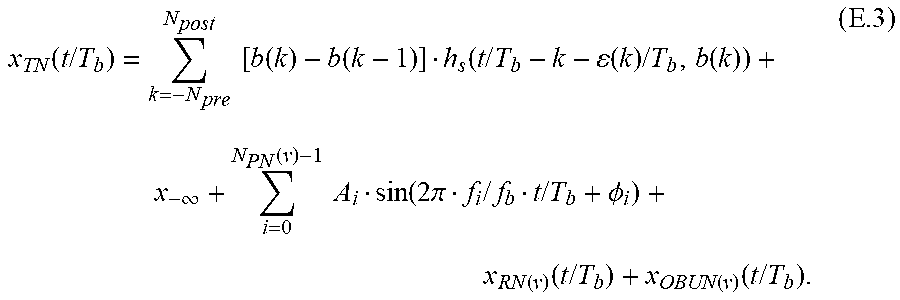
M00007

M00008
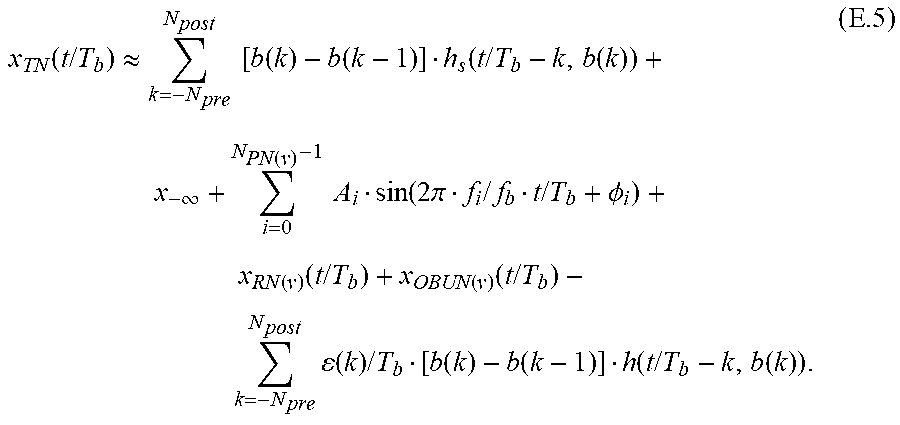
M00009

M00010

M00011

M00012

M00013

M00014

M00015

M00016
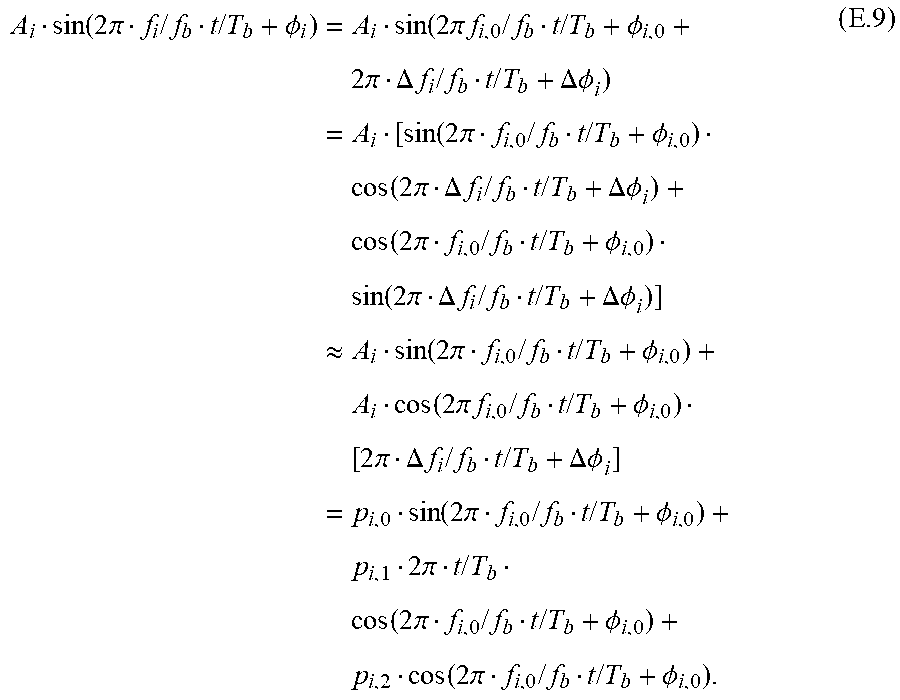
M00017

M00018
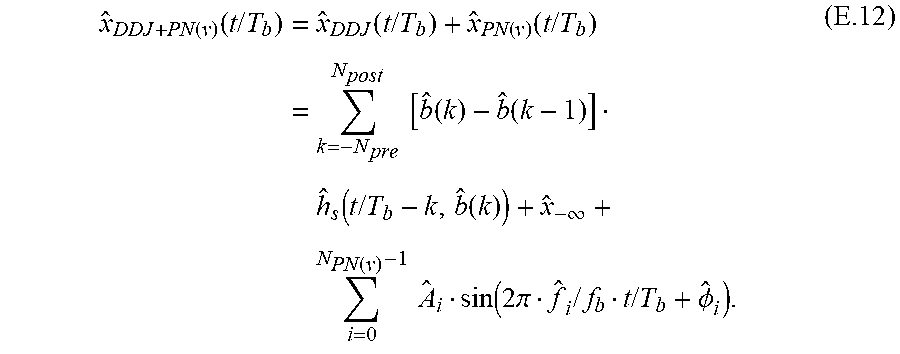
M00019

M00020

M00021

M00022

M00023

M00024

M00025
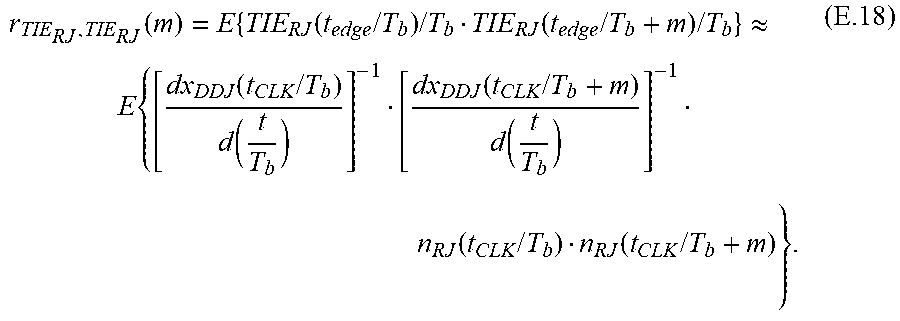
M00026

M00027

M00028

M00029

M00030
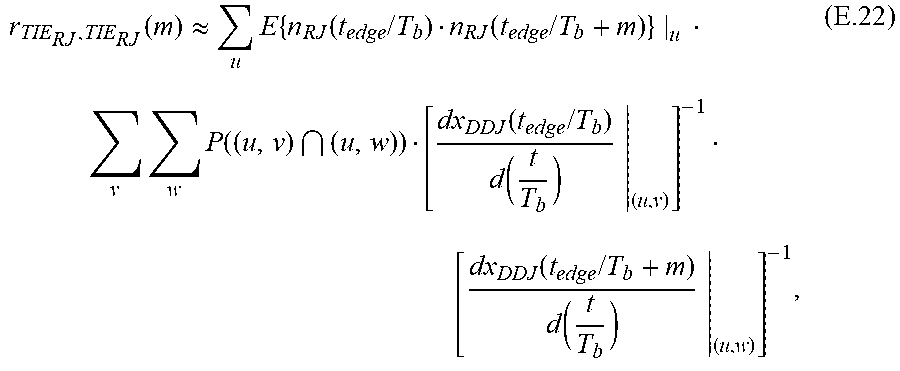
M00031

M00032

M00033

M00034
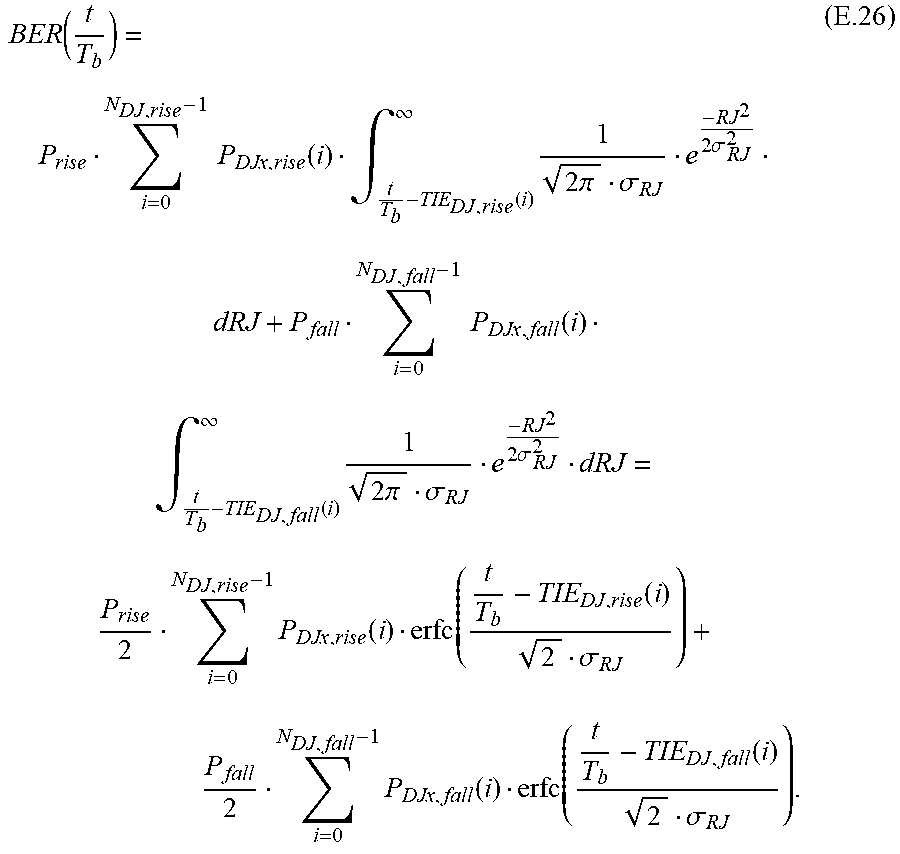
M00035
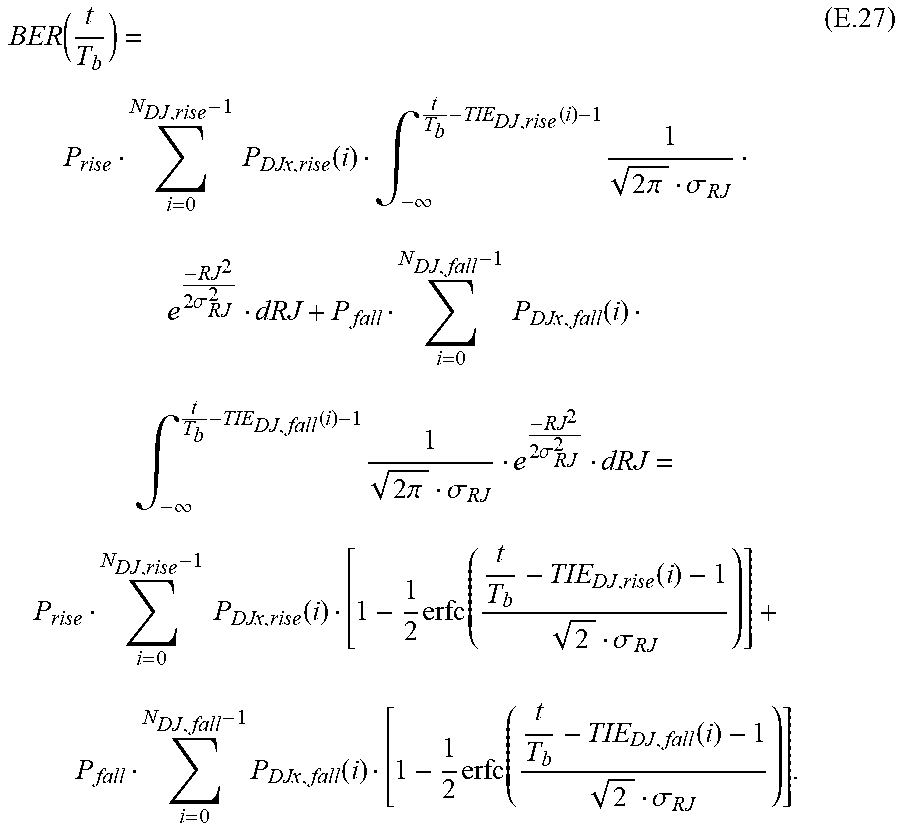
M00036

M00037

M00038

M00039

M00040
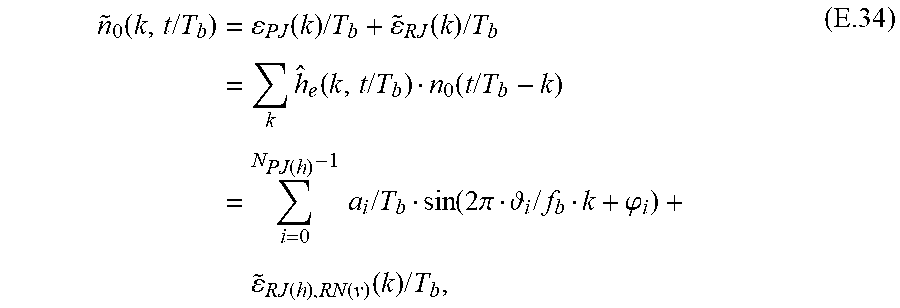
M00041

M00042
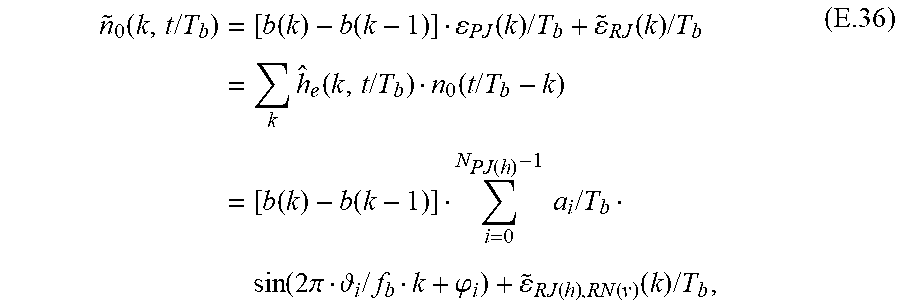
M00043

M00044

M00045

M00046

M00047

M00048

M00049

M00050

M00051

M00052

M00053

M00054

M00055

XML
uspto.report is an independent third-party trademark research tool that is not affiliated, endorsed, or sponsored by the United States Patent and Trademark Office (USPTO) or any other governmental organization. The information provided by uspto.report is based on publicly available data at the time of writing and is intended for informational purposes only.
While we strive to provide accurate and up-to-date information, we do not guarantee the accuracy, completeness, reliability, or suitability of the information displayed on this site. The use of this site is at your own risk. Any reliance you place on such information is therefore strictly at your own risk.
All official trademark data, including owner information, should be verified by visiting the official USPTO website at www.uspto.gov. This site is not intended to replace professional legal advice and should not be used as a substitute for consulting with a legal professional who is knowledgeable about trademark law.